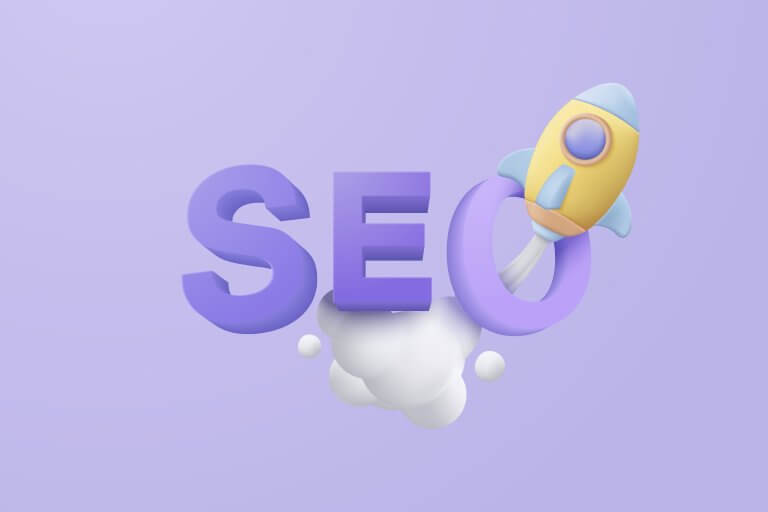Want a heads up when a new story drops? Subscribe here.

Content marketing has gone a long way from being something that marketers push to online audiences to an effective means to engage with people actively looking for help, entertainment, and information.
It has also evolved to become one of the foremost ways to reach customers at every step of the buyer’s journey – when they are looking for products or services, comparing features or prices, and making purchasing decisions.
Content guides buyers along the path of purchase, and the few businesses that are still lagging are missing a huge opportunity for growth. In fact, with the advent of the physical web and mobile payment options, the demand for helpful, engaging, and relevant content is going to increase across many sectors of the economy.
In addition to bringing traffic to your website, content will become the context and medium where transactions are made. Shortly, content will be the new point of sale for businesses gone digital.
Table of Contents
Introduction to Content Marketing

Content marketing is a long-term SEO strategy for building and growing an engaged and motivated audience. It involves creating and publishing content via diverse digital environments such as websites, blogs, newsletters, social media networks, and print publications.
Whatever the choice of a medium, content marketing is about creative storytelling, and we know people tell stories every day. How we see the past, imagine different strategies, and interpret outcomes in social situations – these are all stories.
How we present a brand, convey a message, and communicate the benefits of a product or service – are also stories that help engage customers beyond facts. Sharing stories promotes understanding and stirs emotions, making content vital for any business.
What Is Content Marketing?

Content marketing is about developing and distributing online material to attract potential customers and stimulate interest in a brand and its products and services.
While the goal of any business is to be profitable, content marketing does not explicitly promote a brand’s offerings but enables it to remain relevant and connected with customers.
Content Marketing Goals

While driving demo requests and increasing free trials are all important, content marketing can help you to achieve several smaller goals that grow your customers and revenue.
Sharing consistent, relevant, and helpful content can help build brand awareness, educate and inform online audiences, build rapport and trust, and foster brand loyalty.
Content Marketing Objectives

Content marketing is focused on nurturing relationships with existing and potential customers. When done right, it helps businesses establish expertise, increase brand authority, and create a sense of community.
Successful content marketing is about answering questions and solving problems that customers are struggling with. It is about becoming a thought leader that people listen to and care about.
Content Marketing Framework

As a strategic planning tool, a content marketing framework serves as a guide and provides structure to your marketing plan. It can include several components such as conducting a content audit, finding out what your competitors’ strategies are, and structuring a process that will help you accomplish your goals.
Also, having a framework in place helps establish clear expectations and responsibilities and ensures that everyone in your company is on the same page. It is a tool to identify missed opportunities, reduce redundant responsibilities, and make sure everyone knows where, when, and what is expected.
Content Marketing Plan

You already have a lot of great content – videos, eBooks, guides, case studies, and blogs. How are you going to promote your content so it reaches your target audience? Do you have specific objectives aligned with your business needs, vision, brand values, timeline, and content?
Maybe you are looking to increase brand awareness and your digital presence. Or do you want to generate more leads? If you can’t answer any of these questions, then it’s time to come up with a comprehensive and thought-out marketing plan.
Generally, your content marketing plan should include 6 key components:
- Setting goals – what are you looking to accomplish?
- Defining your audience – what is your target customer persona?
- Choosing content – what types of content work well for your brand, products, and customers?
- Identifying distribution channels – which channels are best for promoting your content?
- Strategies – how are you going to accomplish your goals?
- Metrics – what metrics would you look at to measure success?
Content Marketing Funnel
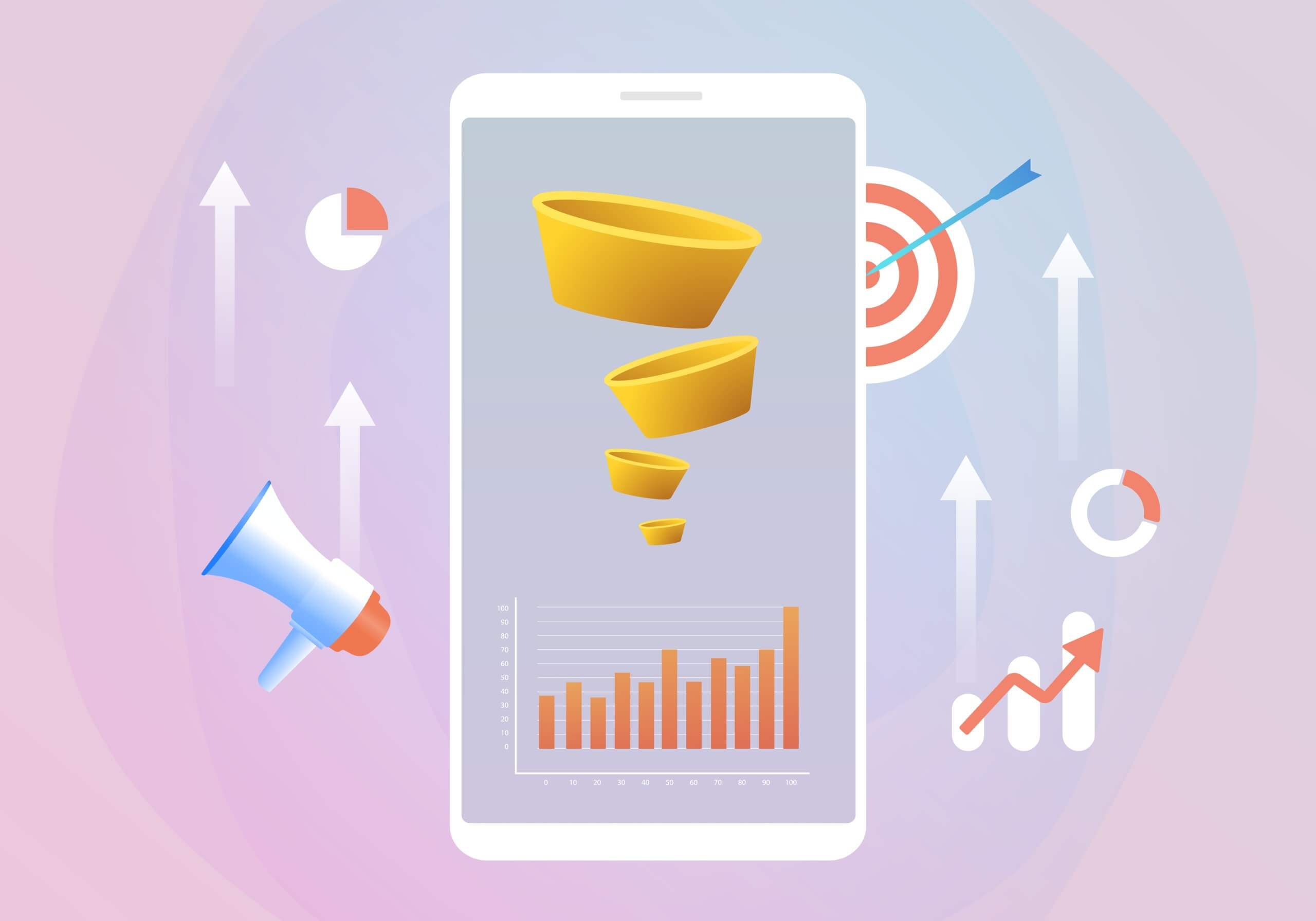
A content marketing funnel is a tool that ensures you are marketing the right type of content for the different stages of the customer’s journey.
The first stage is where buyers are entering the funnel and looking into the types of options available. When targeting early-stage customers, you need content that informs, educates, and answers questions. Content that facilitates awareness works well at this stage. Think of eBooks, infographics, podcasts, social media updates, and the like.
The second or middle of the funnel stage is where customers are evaluating their options. They are looking for content that would help them make an informed decision.
Prospects are looking to find out whether your product solves a specific problem and whether it solves it well. The types of content that belong at this stage include webinars, useful resources, emails, white papers, case studies, quizzes, and surveys.
At the bottom of the funnel, customers are already at the purchase or decision stage. They are gathering all the information they need before making a purchase.
At this point, you want to demonstrate to customers how your product is superior. The kind of content your need to be focusing on should reinforce the idea that your product or service is the best choice.
Examples of content that serve this purpose include comparison videos, events, customer stories, demos, and free trials. Ultimately, the goal is to delight customers so that they want to purchase again and promote your brand to family and friends.
How Does Content Marketing Work?

Content marketing focuses on producing valuable, informative, and consistent content to connect with your ideal customer. To maximize effectiveness and impact, your content marketing strategy should be guided by three factors: context, channel, and connection.
Content Marketing Basics

The first component, context is the backdrop for conveying your message and brand story. It must be relevant to your target audience, taking their transactional, behavioral, and demographic characteristics into account. Context could be anything that supports your message and branding and resonates with your audience.
Next, you can distribute content via a wide range of formats, including social media, online forums, email, live events, print, messaging, etc. As people access information from multiple devices, you need to make sure it can be read via tablets, smartphones, and desktop computers.
Third, one of the main goals of content marketing is to create connections by facilitating and encouraging interaction and engagement. Here, the key to success is building a community and adding value to keep the conversation going.
Content Marketing Tools

Since most businesses produce content nowadays, there is no doubt this can be a winning approach. The question is what interests online audiences and how do you move them through the sales funnel?
Fortunately, there is a wide range of tools that can support your marketing efforts. Semrush, HubSpot, and Wordable are all tools that are worth trying out.
Semrush is one tool that is ideal for teams, content marketers, and SEOs alike. With its help, you can identify hundreds of thousands of relevant keywords, whether targeting customers locally or nationwide.
Long considered the gold standard of content marketing tools, Semrush allows you to find topics that drive engagement, check content for originality, tone of voice, SEO, and readability, and detect areas that might need some improvement.
Whether you want to research your competitors or produce fresh content that resonates with your customers, HubSpot is a powerful tool that never goes out of style. This all-in-one platform has plenty of features to explore, including a blog ideas generator, buyer persona template, and pipeline management software, to name a few.
If you are sharing content via HubSpot, Medium, and WordPress, Wordable is one handy tool to create publish-ready pieces. It automatically cleanses content of spaces, redundant line breaks, and font and span tags while setting featured images, embedding video links, and setting alt text, byline, category, and post URL.
🔥 Tip: Hundreds of growing businesses use Socialfix to create their content marketing strategy and showcase their products and services. 
Content Marketing vs Other Types of Marketing

Here’s how content marketing compares to the rest most utilized strategies.
Content Marketing vs. Digital Marketing
Digital marketing encompasses a wide range of strategies for online promotion, including pay-per-click, SEO, social media, affiliate, mobile, email, and content marketing. Some of the techniques are indirect while others such as PPC aim to sell products directly via paid advertising.
Content marketing, on the other hand, is indirect in that the main goal is to increase brand awareness, and inform, and engage with customers. It is a specific technique that focuses on generating and distributing content to help promote your brand.
Content vs. Social Media Marketing

Content marketing is about delivering value through highly relevant, informative, and engaging pieces, whether blog posts, videos, guides, white papers, or news releases. It is a tool to entertain, inform, and educate online audiences and enhance engagement.
Social media is used by brands to communicate with customers more conversationally and informally. While brands use social channels to share content, they are more likely to take a relaxed approach to engaging audiences.
Social media marketing also includes community building and management, networking sponsorship and advertising, live streaming, and contributing to forums.
Content vs. Traditional Marketing

Traditional marketing uses a diverse array of offline strategies to engage with customers. It can take different forms, including:
- Print advertising – billboards, coupons, newsletters, magazines
- TV and radio advertising
- Direct mail – fliers, catalogs, brochures, free samples, letters, postcards
- Referral and networking
- Cold calls, face-to-face meetings, direct sales
All these strategies aim to reach the broadest audience possible, even when customers are not interested in a brand’s offerings. They target people when they are doing something else like jogging outside, driving, watching TV, shopping, etc. In this sense, traditional marketing uses advertisements that get in the way of what people are doing or trying to accomplish.
Unlike traditional advertising, content marketing is more about offering something of value than it is about pushing a product or service. It is about earning your audience by offering relevant, informative content and building trust.
While traditional marketing relies on cold calling and rented billboard space, content marketing is focused on producing content that provides value, builds relationships, and gives customers space to decide.
Content Marketing vs. Copywriting

In most basic terms, content marketing focuses on educating, inspiring, or empowering customers while copywriting aims to increase brand awareness and motivate customers to do business with you.
Examples of different types of copy can be promotional emails, descriptions of your products and services, business introduction letters, and ad copies.
Unlike copywriting which is sales-oriented and focused on persuasion, content writing is informative and can take any number of forms. Common formats include eBooks, videos, podcasts, articles, blog posts, data sheets, and long-form content.
Content Marketing vs. Paid Advertising
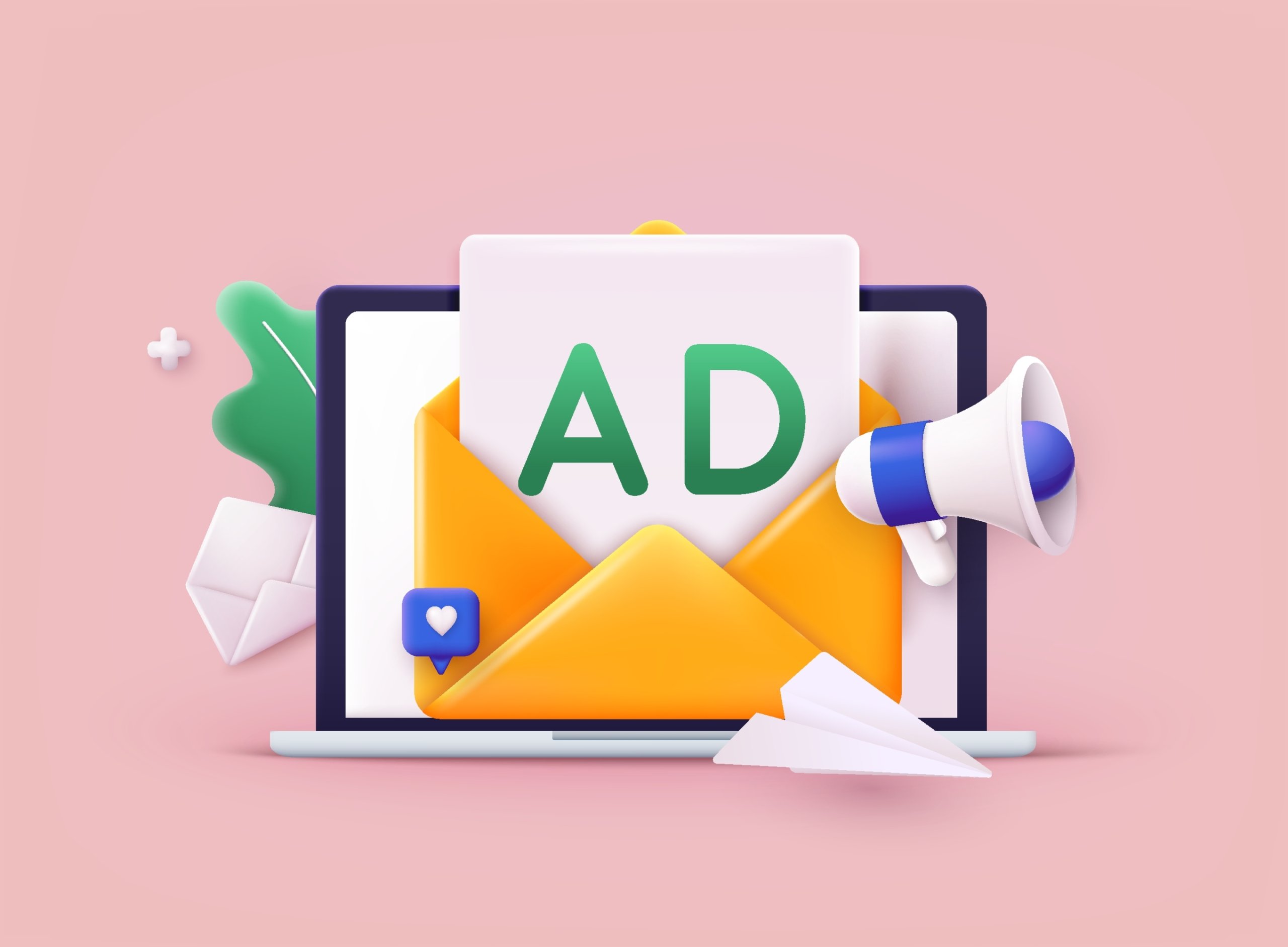
Whether offline or online, paid advertising involves paying to disseminate a marketing message via social networking sites, print media, or television.
This is like buying a prime spot to reach customers faster and generate more leads. This can be done through different types of paid advertising, including social media, pay-per-click, and Google Adwords.
While paid ads aim to generate quick results, content marketing focuses more on raising awareness, building trust, and offering value to customers. Various formats can help increase engagement and captivate audiences, including opinion posts, videos, polls and quizzes, and podcasts.
Content Marketing vs. Paid Creative

When advertising on paid media, brands purchase a spot on a publisher’s website or social media channel so that they can promote their brand message.
Marketers use different types of paid creatives to increase their reach, including video, display, and text as well as out-of-home advertising via posters, billboards, and ads on bus shelters, buses, benches, and other outdoor areas. Whatever the format, you pay for clicks, views, or monthly to get your business in front of potential customers.
Paid advertising is more of a hard-sell approach focused on generating quick results. Unlike it, content marketing aims to create an emotional connection between businesses and customers via the power of storytelling.
The goal is to offer helpful, relevant content that people might like instead of requiring their attention. This makes it a soft-sell approach that aims to keep customers engaged in the long run and not chase fast results.
Types Of Content Marketing
Diving into the depths of content marketing we need to look at the different types of content that make the strategy such an important part of a company’s digital marketing efforts.
Blogging

Blog posts enable brands to share stories, thoughts, and insights around relevant topics. You can share company news, discuss plans, talk about industry trends, or answer questions that visitors are asking.
Topics that might be of interest to your audience can also include:
- Customer problems and pain points
- Myths and misconceptions
- Alternative solutions
- Pros and cons
- Cost/cost-effectiveness
- Meet the staff
- Behind-the-scenes
- Values driving you as a brand
- Industry-related events
- The future of your industry
- Free resources customers can use
Blogging on topics that customers might be interested in is a way to keep them engaged, build relationships, and reinforce your brand’s messaging.
Video
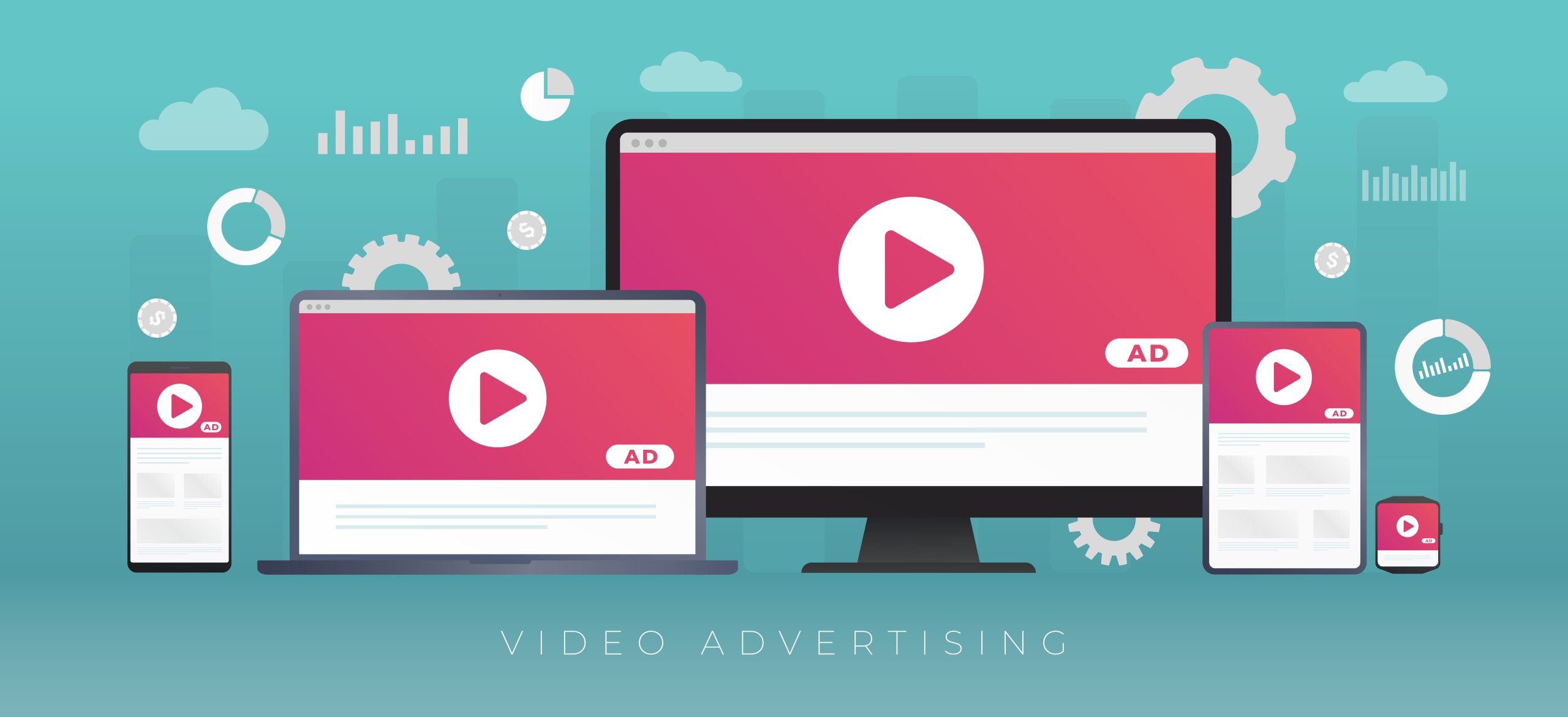
Video content is any format you create to promote your products or services. It can be in the form of live videos, vlogs, recorded presentations, customer testimonials, animated demos, and so on.
The types of video users want to see depend on the platform they are using. Instagram, for example, is a platform where you can share customer reviews and motivational videos.
Facebook users are mainly looking for news and updates so you can share things like upcoming sales and product launches. YouTube users, on the other hand, are mostly looking to learn and the types of videos you can share include how-tos, simulations, explainers, video courses, and webinars.
Using the right type of video is an effective way to keep customers engaged and coming back. As video blends visual and auditory cues, it is more captivating than text and images alone and better at disseminating information to online audiences.
Podcasting
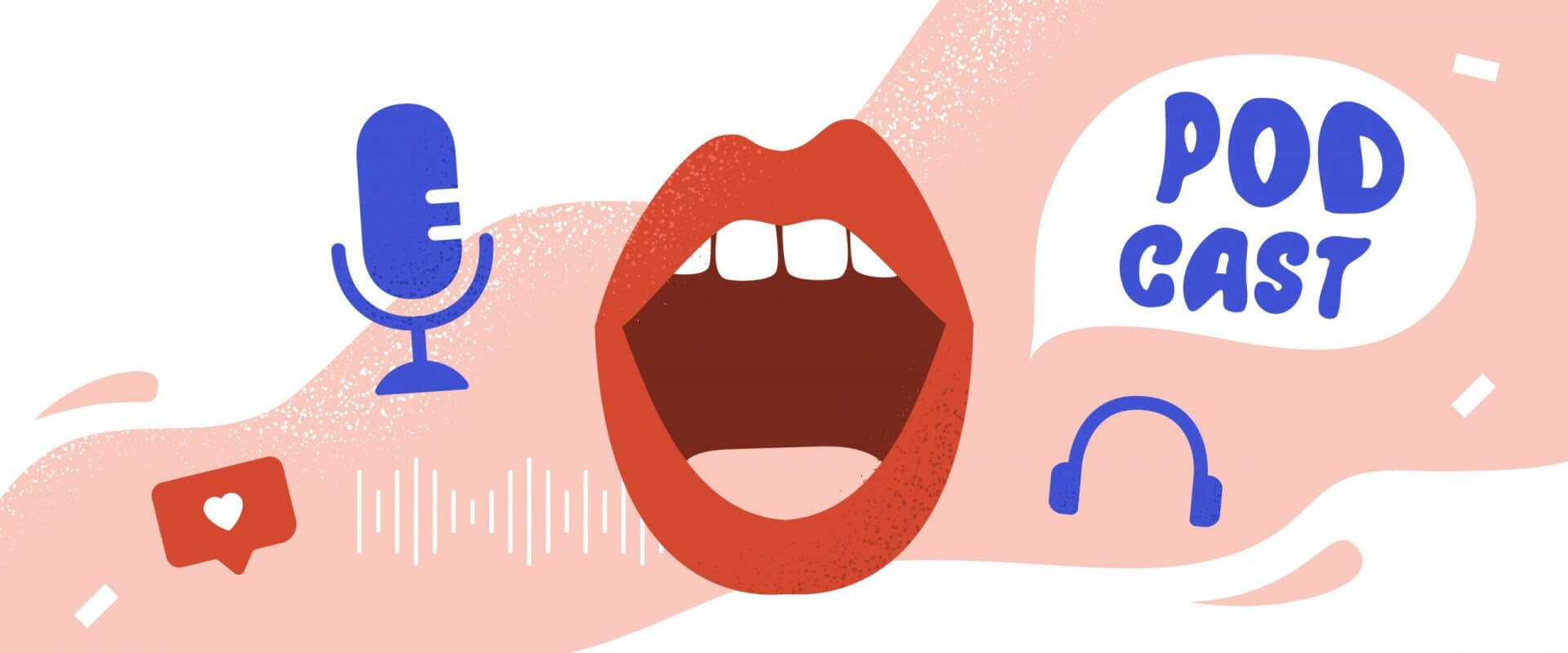
Podcasting is the practice of producing digital audio files which users can listen to across various devices. They can listen anywhere and anytime they want to instead of tuning in live. Podcasts are increasingly popular as a way to relax, keep up-to-date, and learn new things.
People love to listen to podcasts because they educate, offer a new perspective, and connect them with industry and thought leaders. What is more, they are free, easy to access, and convenient. You can listen to your favorite series while driving, jogging, cooking, or cleaning.
For businesses, podcasting is a way to share knowledge and expertise, build trust, and engage on a more personal level. It allows brands to open up more, discuss their ups and downs, and showcase the human side of their business.
Moreover, there are different types and formats to experiment with and make your podcast journey a success. Common types to look into can be co-hosted, improv, storytelling, conversational, interview, and panel shows.
Infographics

At its core, an infographic is a collection of text, data visualizations, and imagery intended to present information in a way that is quick and easy to digest.
If you want customers to understand complex concepts, you need to tell a story in a simple format. Infographics not only help summarize and simplify information in a visually pleasing way but enable businesses to tell stories that are captivating and engaging.
As humans are visual creatures by nature, the brain works through visual expressions much more quicker, making infographics an excellent choice to improve understanding.

One of the main benefits of email is that it allows brands to create content that is personalized and relevant to their audience’s needs. You can create lists based on engagement level, purchase behavior, geography, time zone, and industry.
Email also allows you to gain valuable insights about the customer experience so that you keep users engaged and coming back.
One way to ensure that nothing slips through the cracks is to send customer satisfaction surveys. This will help you figure out whether customers are unhappy with your service and are mostly detractors or they are brand ambassadors.
Finally, email marketing is an easy and efficient way to reach more people. In fact, 99 % of people check their email daily while 58 % of users check their inbox first in the morning (Optinmonster). They can check it from different devices and multiple times a day, which increases your reach and the success of your marketing campaign.
Visual Content

Visual content uses graphics, illustrations, and imagery to share information in a way that is engaging and easy to consume. Businesses rely on visuals to grab attention, improve recall, and get higher engagement.
Adding imagery to text makes content more digestible, compelling, and memorable, helping your business stand out online. Even without text, visuals can speak volumes and deliver compelling messages that engage, inspire, and persuade.
There are a variety of visual content forms that can help improve engagement and understanding. Common formats you may want to consider include:
Charts and diagrams
- Pictures
- Memes
- Illustrations
- Screenshots
- Comics and cartoons
- Interactive tools
- Visual quotes
- GIFs
- Infographics and gifographics
E-books
An eBook is a digital file that can be downloaded and read on your smartphone or tablet. Many people prefer to read eBooks over print-based editions because of benefits such as interactivity, accessibility, portability, and sustainability.
While there are obvious benefits for users, eBooks can also be a valuable addition to any brand’s marketing strategy.
To begin with, a great eBook with in-depth, engaging content can significantly impact customers’ perception of a brand. This format also allows businesses to explore a specific topic from different perspectives and viewpoints and in extreme detail.
Covering a topic in depth is a way for brands to become an authority in their industry. When brands position their business as a go-to source, customers begin to associate their product or service with the entire industry.
And if your content engages, entertains, informs, and educates buyers, price is no longer a deciding factor.
Lead Magnets
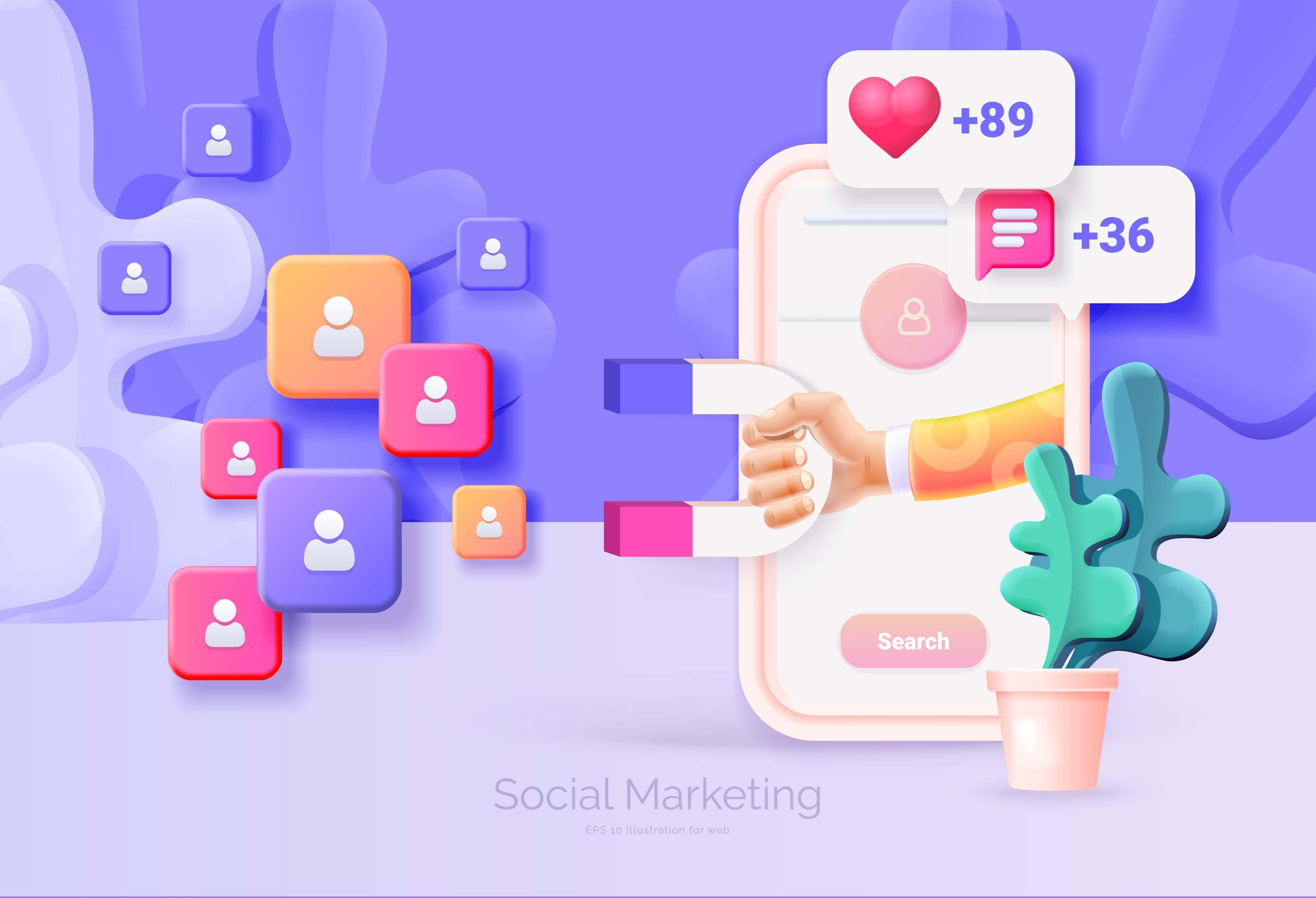
A lead magnet is a free service or item that brands give away to attract potential customers and gather contact details. It can be in the form of product trials and samples, free templates, masterclasses or webinars, video or audio lessons, etc.
While brands use lead magnets as a customer acquisition tool, there are other ways in which they can benefit from giving away freebies.
For one thing, if a lead magnet offers value to customers, they will be willing to re-engage with your brand. Magnets that are of high quality, relevant, and tailored to your audience are considered highly valuable.
Second, coming up with a product that customers can use repeatedly is a way to keep your brand top of mind.
Lastly, offering lead magnets shows potential buyers that you are keen on giving them value and not just trying to sell.
Whitepapers

A whitepaper is a research-based, data-driven, in-depth report focused on a complex topic or subject. Whitepapers aim to present a point of view or perspective, untangle a complex topic to make it clear, or present a problem and possible solutions.
In marketing, whitepapers are often used to inform and educate customers and encourage them to try a specific product, service, methodology, or technology. The goal is to offer buyers a valuable resource that can influence decision-making.
Depending on your specific product, it can take the form of a technical, market research, educational, or reference guide, whichever suits your business objectives.
SlideShare Presentations

A SlideShare presentation is yet another way to add a visual component to your content marketing strategy. Slides that are well-designed, colorful, and interesting are quick to attract attention.
If it is the kind of presentation that also provides highly useful, compelling information, you will be able to spark interest, stir emotion, and motivate users to learn more about your offerings.
Presentations that are inspiring and motivational evoke an emotional reaction and can make a significant impact. A piece that aims to inform and persuade, on the other hand, would include background information, supportive facts, and a strong call to action to facilitate decision-making.
Quizzes/Tools

Brands typically use quizzes to gather feedback and gain important insights into what customers think of their products or service. This is a form of market research to learn more about your target customers and their preferences, needs, and pain points.
In addition to gathering feedback, quizzes are also ideal for demonstrating your expertise and knowledge on topics related to your industry and business. Customers will want to hear more from you when they see you can dig deeper into industry-related topics.
Last but not least, keeping customers engaged and staying longer on your website will lower your bounce rate which in turn will improve your site’s ranking.
Checklists
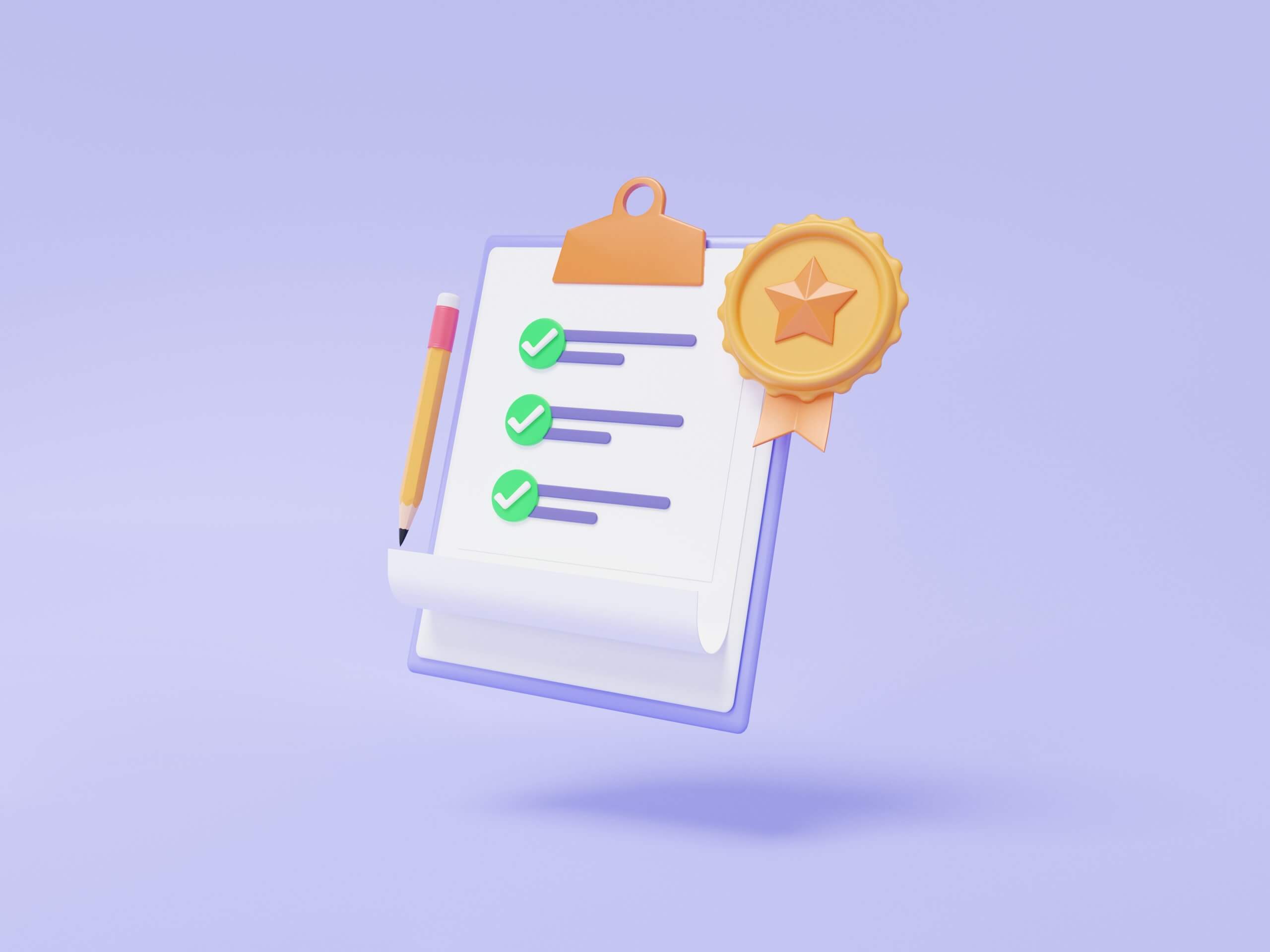
People love checklists because they allow them to do things in a way that is repeatable, predictable, and measurable. They can perform better when they follow steps or rules.
When doing something different or new, many feel overwhelmed, helpless, and stressed. A checklist that offers action steps helps complete a task with minimum mental effort.
Moreover, most people know what a checklist is and how to use it. It normally takes little time and effort to understand what needs to be done.
Plus, people love free tools and this is what you’re offering with checklists – a free tool to complete an unfamiliar task easily, efficiently, and concisely.
Courses

Most people find online courses convenient simply because everything is available 24/7. They can discuss questions, take practice quizzes, review assignments, access notes, and get announcements at any time.
Online courses also offer flexibility in allowing students to complete assignments from home, while commuting, traveling, or whatever else they are doing.
For those caring for sick relatives, parents with small children, people making frequent business trips, and employees with busy work schedules, online courses offer definite advantages.
While online courses benefit students in many ways, creating an online portal or membership area can offer value to any business organization that invests in e-learning.
So, if you choose to offer a course and price it for free, this can be a great way to generate traffic and raise awareness of your business and your other offerings.
People love free stuff. And when your courses start to get popular and gain momentum, you can always switch from free to paid as a way to gain additional revenue.
Webinars
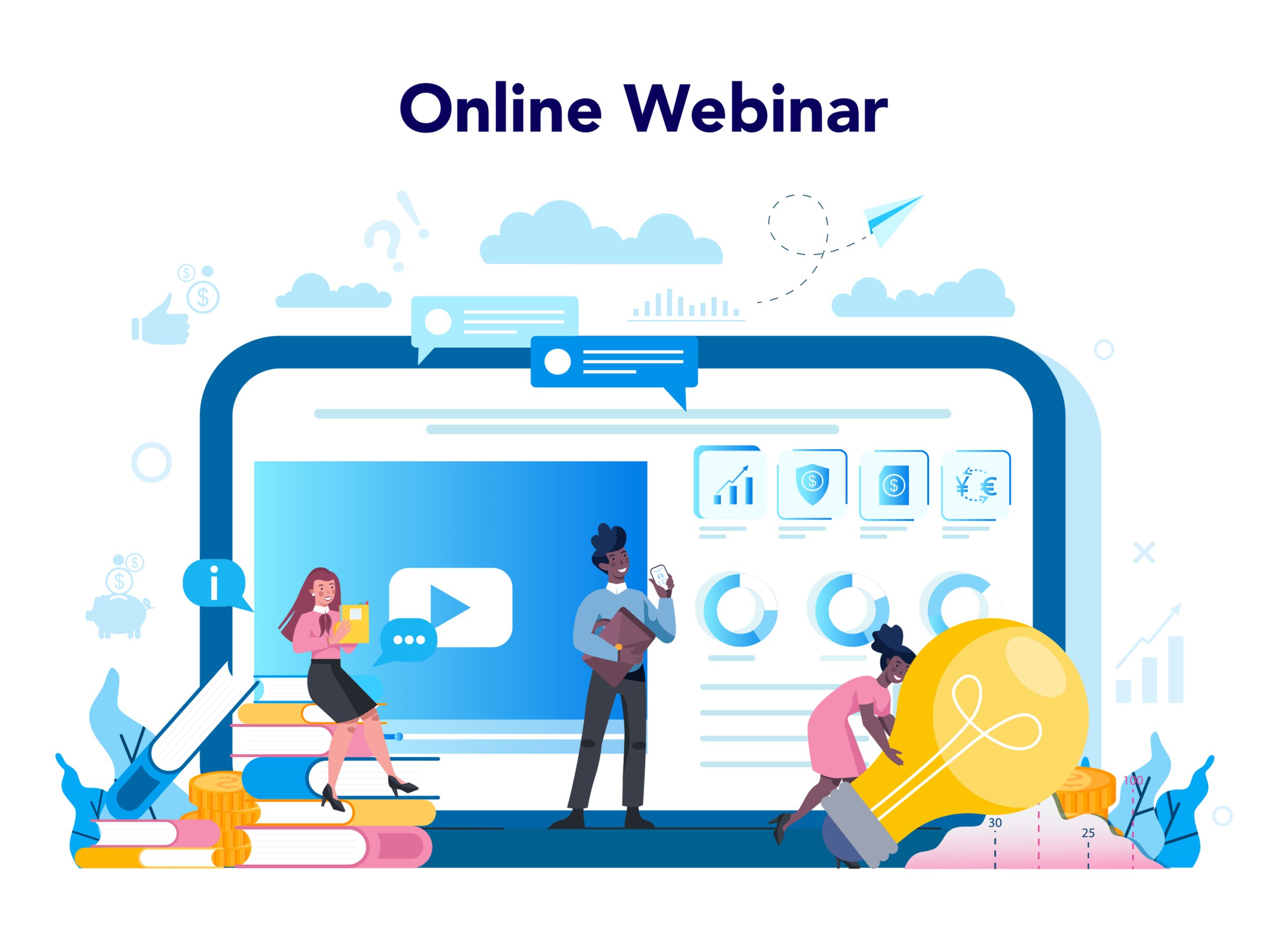
Offering free webinars can be an effective way to reach a broader audience digitally. As there are no geographical borders to keep people from attending, you will be able to attract sponsors and participants globally. Everyone with a stable internet connection, whether in Italy or Kenya, can join in.
Second, planning and logistics are much easier. You don’t have to arrange accommodation, meals, and travel for participants and presenters.
Third, hosting a webinar is a highly effective way to boost engagement. When people watch a video or read an article, they only consume content passively.
With webinars, on the other hand, there is plenty of room for interaction like sharing opinions via live chat, taking polls and surveys, and joining virtual scavenger hunts.
Slide Decks

A slide deck is a series or group of slides that can be used to deliver content in the form of images, text, or multimedia. You can use slide decks to create a presentation or educational or training materials, pitch your products to potential customers, or communicate a business concept or idea to investors.
Whether you need to form a cohesive presentation or make a sales pitch, there are many benefits to using a slide deck. Unlike delivering a speech or writing a blog post, a presentation helps keep things concise and to the point. It also provides visual cues that are easy to consume, highlights key points you want to convey, and delivers your message in an engaging format.
Free Apps

Offering a free app is one way to get it off the ground and bring in potential customers. Even if your goal is to promote your app, you can consider offering a paid version at some point.
While people can use it for free as long as they like, free apps lack features found in the paid version like early updates, premium features, loyalty rewards, discounts, etc.
If you believe your app truly adds value, then you may want to offer a free trial. This way customers will have a better grasp of what it is like to use the paid version.
Social Media Post

Posting regularly on social media allows businesses to engage with users, attract followers, and drive inbound traffic and qualified leads.
Social media is also a powerful tool for brand building because it can get you and your products in front of a lot of people. Brand awareness is the key to success in any industry as people buy from businesses they recognize.
Another key benefit to having a social media presence is that you get to know your target customers and their needs.
You can do this through social listening which is the process of monitoring and analyzing conversations and mentions related to your products, brand, and industry. This will give you a good idea of how your brand is perceived online, what’s important to your customers, and what they want to talk about.
Social listening can give you valuable insights that you can use in your marketing campaign, content strategy, R&D, and business development activities.
What Is Content Marketing Used for?
When you leverage content marketing you get a variety of benefits. Here are a few.
Content Marketing for Brand Awareness

There are many ways in which you can use content marketing to build brand awareness so that customers are familiar with your products, services, and business.
One strategy that works particularly well is creating interesting non-branded content that drives traffic to your blog or website. If your website is brand-new, however, chances are it has just a handful of links to rank high in search results. This also has to do with how often you publish content, and what is your domain age.
Luckily, there are ways to go around this and benefit from other websites’ authority. You can reach out to reputable websites that may be willing to publish your content.
Alternatively, you can try to find guest posting opportunities to get more eyes on your posts and brand.
Content Marketing for Lead Generation

Lead-generating content comes in various formats, like demos, product trials, and free courses. Common types are also:
- Checklists
- Cheat sheets
- Contests
- eBooks
- Email subscriptions
- Free apps and tools
- Webinars
- Whitepapers
In its essence, the goal of content marketing is to develop and distribute highly relevant, informative, and interesting pieces which create leads and guide them to make a purchase.
Content Marketing for Attracting New Customers

The best approach to attracting new customers is crafting original, quality content that educates, offers practical advice, addresses concerns, and answers common questions.
Top-of-funnel content doesn’t try to sell but engages prospects via knowledge, storytelling, and news. Common formats that you can use at this initial stage include articles, blog posts, how-to guides, and social media posts.
Also, effective top-of-funnel content tends to be visual, sticky, straightforward, and snackable.
Content Marketing for High Involvement Brands

The best way to promote a high-involvement product is to provide customers with all the information they need to help them with their purchasing decision.
You need to give them a good reason to decide in your favor, especially when it comes to high-involvement products like furniture, jewelry, vehicles, and insurance coverage. This means your content should be centered around the advantages of owning and using your product.
Ultimately, it is about convincing customers that your product solves their problems in a more efficient and cost-effective way than your competitors.
Who Is Content Marketing for?
Who should take advantage of the power of content marketing? The short answer is everyone. But let’s take a closer look.
Content Marketing for Small Businesses

Content marketing can be a great way to compete with established brands with a larger budget for PR and advertising.
Smaller businesses often find it difficult to stand out in a crowded landscape. It is not only tight budgets they are struggling with. Their staff is small. They are still in the process of acquiring equipment, suppliers, goodwill, and contacts. In these circumstances, competing with brands that are richer and bigger can look like a frightening experience.
Luckily, some tools can help your small business compete with established brands with larger advertising budgets. Content marketing is one of them.
Content that is helpful, relevant, and engaging and showcases your brand’s values can help differentiate your business from that of your competitors. A well-crafted content strategy and strong digital presence will aid your efforts to build brand awareness and recognition. More people will get to know you and talk about your brand and products.
Plus, sharing thought-out, interesting content across different channels is a way to expand your marketing reach and connect with more customers. Your newsletter, social media profile, and website are just a few of the touch points to engage with potential customers.
Content Marketing for B2Bs

If you are a B2B business, you can use content marketing to put your brand in front of decision-makers who work in the industries you are looking to serve. The strategies you use, however, will differ from the standard B2C approach in a few major ways.
First, decision-makers rely more on data and logic to make purchasing decisions.
Second, it often takes a couple of months to close because decision-makers may need to convince other stakeholders, especially when it comes to more expensive products.
What this means is you need to know your product well so that you can create good stories around it. Knowing all about it will help you show the value of your offer as well, provided that, you use the right kind of content.
Formats that can work well include quotes from experts, interviews with industry professionals, case studies, whitepapers, and webinars.
Lastly, even if you are sitting on the best content, you need to use the right channels to be able to reach the right people. Research by FocusVision shows that B2B customers discover content via internet search (67%), consume it from a vendor’s website (70%), through social media (53%), and publications they read regularly (47%).
Content Marketing for Recruitment Agencies
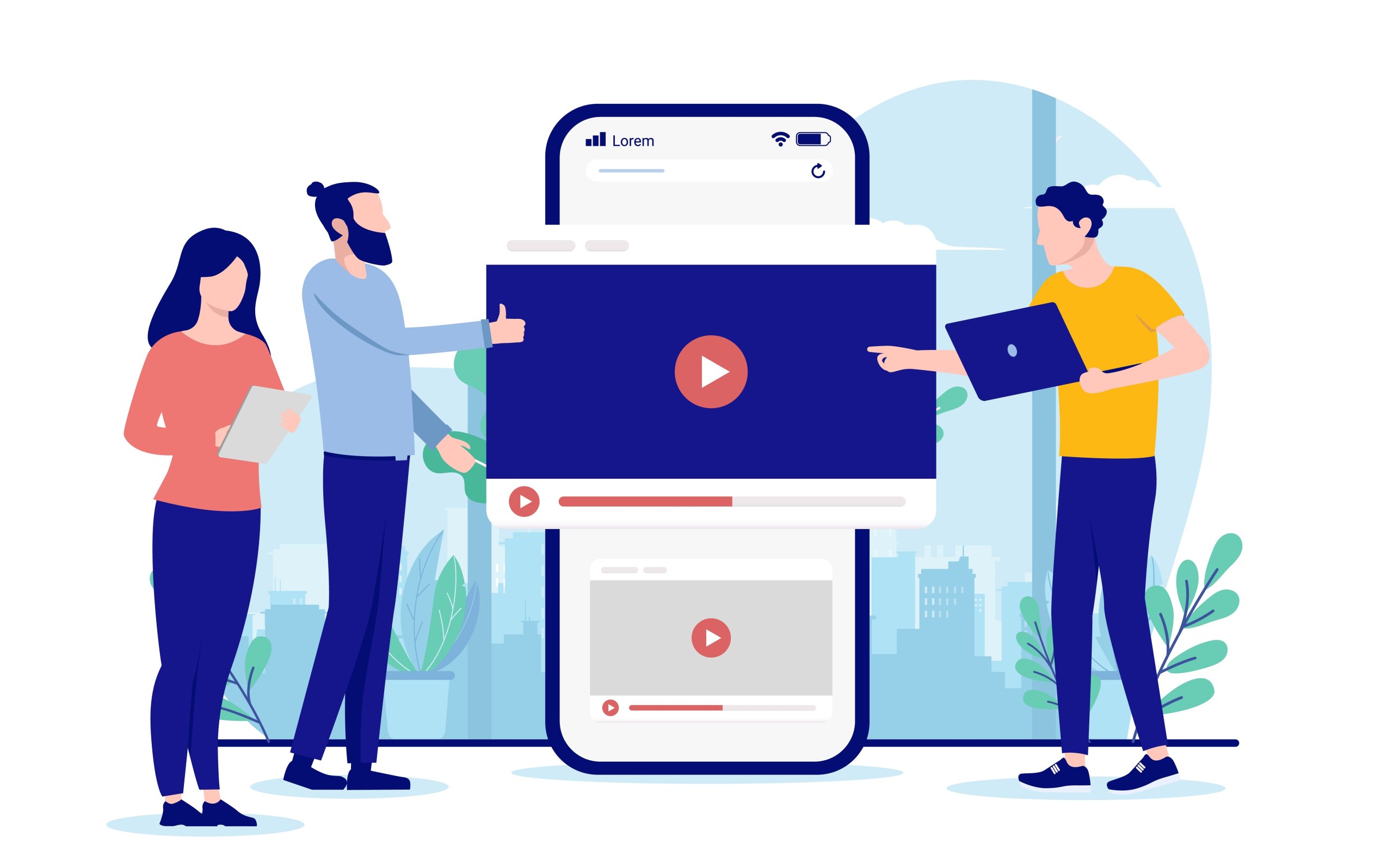
Recruiting agencies can leverage content marketing to attract the best candidates and maintain a large talent network. When done right, it helps improve industry visibility and build relationships with clients and candidates.
Some of the strategies that work particularly well are using social media to connect with high-potential hires and posting regularly on your website’s news or blog section.
Today, most people use platforms such as LinkedIn, Facebook, and Instagram, making social media a good place to identify potential candidates and share jobs with. You also want to provide genuinely useful information and showcase your in-office experience to build brand authority and trust.
Adding a news or blog section to your website is also a good way to demonstrate the knowledge and expertise you’ve gained as a recruitment agency.
It is an opportunity to share insights about industry challenges, trends, and opportunities or offer professional advice to position yourself as a market leader and build trust with your audience.
Content Marketing for Charities

Content marketing is one strategy that works well for charities looking to communicate a need and attract supporters. Support can come in various forms, like donating time and supplies, advocacy, and fundraising.
Yet, charities need to work correspondingly harder to gain familiarity and trust with their audience. This is where content can help cultivate a generosity mindset, inspire people, and drive them to act.
Traditionally, nonprofits reach out to people with stories about the causes and initiatives they are looking to garner support for. Yet, being donor-centric and focusing on your donor’s interests, needs, and concerns is much more effective in motivating people to act.
Also, keep in mind that you are dealing with people with different backgrounds, experiences, and giving capacities. As you are trying to reach out to a diverse audience, you need to create different options for contributing to your cause.
One way is to ask people to donate the amount they are willing to. Other options can be raising awareness, donating items/supplies, and volunteering their time.
Content Marketing for Startups

If you are a startup, content marketing can help you build brand awareness and grow your customer base while saving valuable resources.
Organic content that is helpful and relevant and conveys an impactful message can help you connect with your audience and bring traffic in the long term. Content can be a great tool to get noticed and demonstrate value to potential customers.
As you are still at the top of the funnel and looking to strengthen brand recognition, you want to focus on videos and blogs that educate, inform, and stir interest. At the bottom of the funnel, you will need content that nurtures leads, like case studies, customer reviews, video demos, and the like.
Content Marketing on Different Platforms
Not all content is equal, you have to adapt it for each platform you plan to use it on. Here’s how to navigate the process for the different channels.
Content Marketing on LinkedIn

LinkedIn is great for carousel and document posts, articles, videos, and blog posts. Regardless of the format that fits you best, you should aim at creating content that actually gets seen.
For example, you can share how success has changed your perception of it, talk about your goals, offer tips and career advice, or share your recruitment experience. You can also share a glimpse into your career journey, one of your brand stories, your business mantra, or the challenges you’ve faced as a founder and business.
Content Marketing on Pinterest
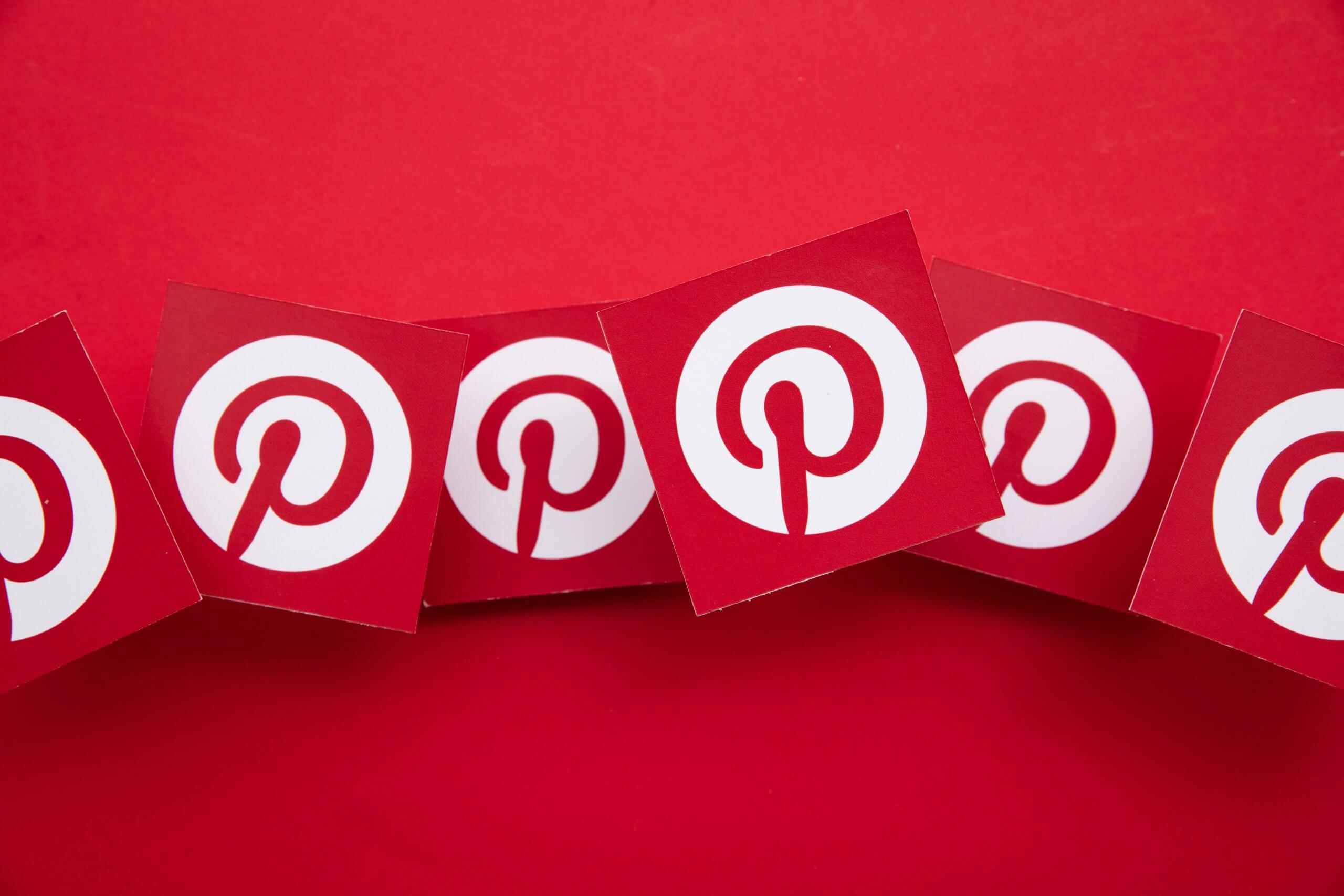
Pinterest can be an effective platform to promote your brand and products.
However, you need content that is compelling enough for users so that they don’t just pass up. The best pins tell a good story, are visually appealing, and evoke an emotional response. Emotion-driven content binds audiences and brands together while actionable advice motivates people to make behavioral changes.
So, the first question to ask is what people actually want from your content. Is it advice, motivation, inspiration, or education they are looking for?
If it is inspiration, for example, you want to evoke curiosity and awe. People experience awe when they see something breathtaking, spectacular, and grand, which evokes a sense of timeless beauty and overwhelming appreciation.
Second, stories that engage users are not only emotionally-driven but genuine and relevant. Stories aren’t meant to be perfect or simulate real life for that matter, but they have to be believable. If your story is too far-fetched, people will not trust you and you won’t be able to build a positive emotional connection.
Content Marketing on Facebook

It will probably not come as a surprise that video is ruling Facebook. In fact, more than 1.25 billion users visit Facebook to watch and share videos each month (Business Standard). Content that drives engagement also includes photos, giveaways, UGC (user-generated content), inspirational images and quotes, and current events.
That said, two content strategies can be used to engage users while maintaining a consistent media presence. One is the 80/20 rule where 80% of your content educates, entertains, and provides value, and 20% promotes your brand.
A second strategy is the rule of thirds where the first third consists of curated content, the second third is shared, and the third is promotional content.
Content Marketing on Instagram

Instagram has one key advantage over other networking sites and that is it’s visually driven. So, if you have an eye-catching product, Instagram can be a great platform to market it.
A strong visual identity can also help you capture users’ attention and showcase your brand. The types of visual content that grab attention and perform well on Instagram include videos, behind-the-scenes, historical photos, food, landscapes, human faces, and inspirational quotes.
While mixing different content types helps, remember to keep a consistent tone and messaging. This will help keep users engaged and growing and prevent them from drifting away.
Why Do You Need Content Marketing for Your Business?
In this section, let’s look at what makes content marketing such an attractive digital marketing strategy.
Benefits of Content Marketing

Content marketing helps businesses build brand awareness and recognition, establish trust and authority, and connect with customers through different forms of content.
People have unique needs, interests, and learning styles. Some prefer to listen to a podcast while others love watching videos. Some people would rather read a good story while others would just skim for the information they might be needing.
Depending on what your audience looks like, you can choose from a variety of formats like videos, whitepapers, blogs, and eBooks while keeping your values, messaging, and voice consistent.
How Can Content Marketing Help Your Business?
Today, customers expect high-quality, relevant content that keeps them updated addresses their pain points, answers their questions and engages them with minimal effort.
Content that speaks to your customers’ needs, answers their doubts, and engages them with relatable stories is seen as valuable and useful. It creates a bond between your brand and your customers, builds loyalty, and brings users a step closer to making a purchase.
What Is NOT Content Marketing and Frequently Made Mistakes to Avoid

Simply creating and sharing articles is not enough. Your content marketing approach is likely to fall into pieces unless you have direction and purpose.
Your strategy needs to align with your business goals and the audience you are targeting. You also need to align your content with search intent and the buyer’s journey.
Some formats work well during the awareness stage (blogs, social media posts) while others help validate the buying decision (customer stories, demos).
Ultimately, the goal of content marketing is to convey the right message to the right people at the right time and become more relevant than your competitors.
Even if it looks like your marketing strategy is on point, it can still fail for several reasons.
Examples of common content marketing mistakes are:
- Failing to define your ideal customer persona
- Not accounting for link building
- Choosing the wrong marketing channel to promote content
- Selling too hard
- Posting low-quality content
- Not publishing regularly
- Relying heavily on SEO
- Ignoring feedback
What Is a Content Marketing Strategy?

At the most basic level, a content marketing strategy is a plan for building an engaged and motivated audience by posting relevant, helpful content.
Brands use this approach to establish expertise and trust, convey key messages, create engagement, and keep their business top of mind.
How Does a Content Marketing Strategy Work?
Having a content marketing strategy in place allows brands to create and share relevant and useful content with a clearly defined target audience. This is the process of creating an immersive environment that invites visitors to learn, shift their perspective, explore, and connect with a brand’s story and make themselves part of it.
Why Build a Content Marketing Strategy?

Businesses typically use content marketing to engage and communicate with customers and accomplish one or more objectives like a bigger customer base, lower costs, and increased revenue.
Building a content marketing strategy also enables brands to identify their reasons for publishing content, their ideal customer persona, and content that would perform well throughout the buyer’s journey.
Who Should Use Content Marketing Strategy?
Depending on the industry you’re in, the audience you’re targetting, and the stage of growth your business has achieved there are specifics when it comes to content marketing strategy. Here’s what to look for.
Content Marketing Strategy for Startups

If you are a startup, the process of creating an effective content marketing strategy begins with defining your mission and goals. Your goals should be relevant, specific, attainable, and measurable.
As a next step, you want to identify your ideal customer persona by looking at things like demographics, habits, interests, pain points, and challenges. The third step is to identify content that will align with your audience and your goals.
Now that you have terrific content that your audience is likely to engage with, you want to find where customers spend their time. If they are on Facebook or Instagram, for example, you should focus your marketing there.
Content Marketing Strategy for Small Business

Content marketing enables small businesses to gain familiarity and build brand recognition. Yet, it can only succeed if you set your targets right.
Whether you want to increase sales by 20% in 6 months or acquire 2,000 subscriptions in 30 days, you need to set clear and defined goals.
The next step involves identifying your target audience, engaging content formats, and the channels that can help promote your content. You also need to develop a publishing calendar based on your business objectives and be consistent in your marketing efforts.
Content Marketing Strategy for eCommerce

For an eCommerce content marketing strategy to bring results, it should be focused on the needs of customers – their questions, concerns, and biggest challenges.
Your goal is to try and meet their needs with helpful, engaging content in formats they are responding to and on channels, they are likely to use.
Second, as good as your products or services are, you need to communicate them right. Try to come up with compelling descriptions, highlight the materials and techniques you use, create a list of benefits, and share customer success stories.
Content Marketing Strategy for Nonprofits

A good content marketing strategy can benefit your organization in many ways. It can help increase general awareness, inspire people, and drive your audience to take action.
While the benefits are plentiful, if you want to be successful in garnering support, there are some things to consider when crafting your marketing strategy.
What are your goals – signing a petition, volunteering, or donating? What are your resources, including know-how, technology, budget, time, and sources for content? What is your ideal audience persona? Defining your target audience will help you choose the right distribution strategy, content topics, and formats, and messaging.
Content Marketing Strategy for the Automobile Industry
In a highly competitive marketplace like automotive, building an efficient content marketing strategy can be a great way to increase your brand reach.
The key to developing a working strategy is to do your research right. When are you likely to sell more – around Christmas time, on Black Friday, or maybe Labor Day? Who is likely to buy from you? Why do they need a new car and what could be their main challenge in buying a vehicle?
Once you have the answers to these questions and know who you should be targeting, it is time to let them know why they’ll want to buy from you. You need to come up with a unique offer that highlights your competitive advantages.
Tell customers what your vehicles do – are they cleaner, faster, bigger, more comfortable, or cheaper than your competitors’? Make sure customers are aware of your value proposition.
Content Marketing Strategy for Healthcare

Whether you are a provider that supplies medical equipment, offers healthcare services to patients, or develops innovative technologies, content marketing can help you connect with your target audience.
As your goal is to be relevant, your specialty, be it medical genetics, diagnostic radiology, or dermatology, should be the main focus of your content. If you are an allergologist, for example, people would expect you to present useful information about allergens, asthma, and the like, not about heart disease.
And as you have deep knowledge in your area of expertise, this will help you to position yourself as a reliable source of information and an expert people can really trust.
Content Marketing Strategy for Hotels

Content marketing is about sharing content that is both useful and relevant to your niche. If you are a business hotel, for example, you can offer tips and advice about hosting successful conferences.
If you are a hosteller, perhaps you can suggest budget airlines that fly to your area or how to get to your destination by metro, train, or bus.
More general content ideas could be “best restaurants in”, “the most underrated attractions in”, “our picks of the best tours”, “how to dress like a local”, etc.
You want to educate visitors about local history and culture, walking routes and trails in your area, and why your destination is worth the journey.
Content Marketing Strategy for B2B
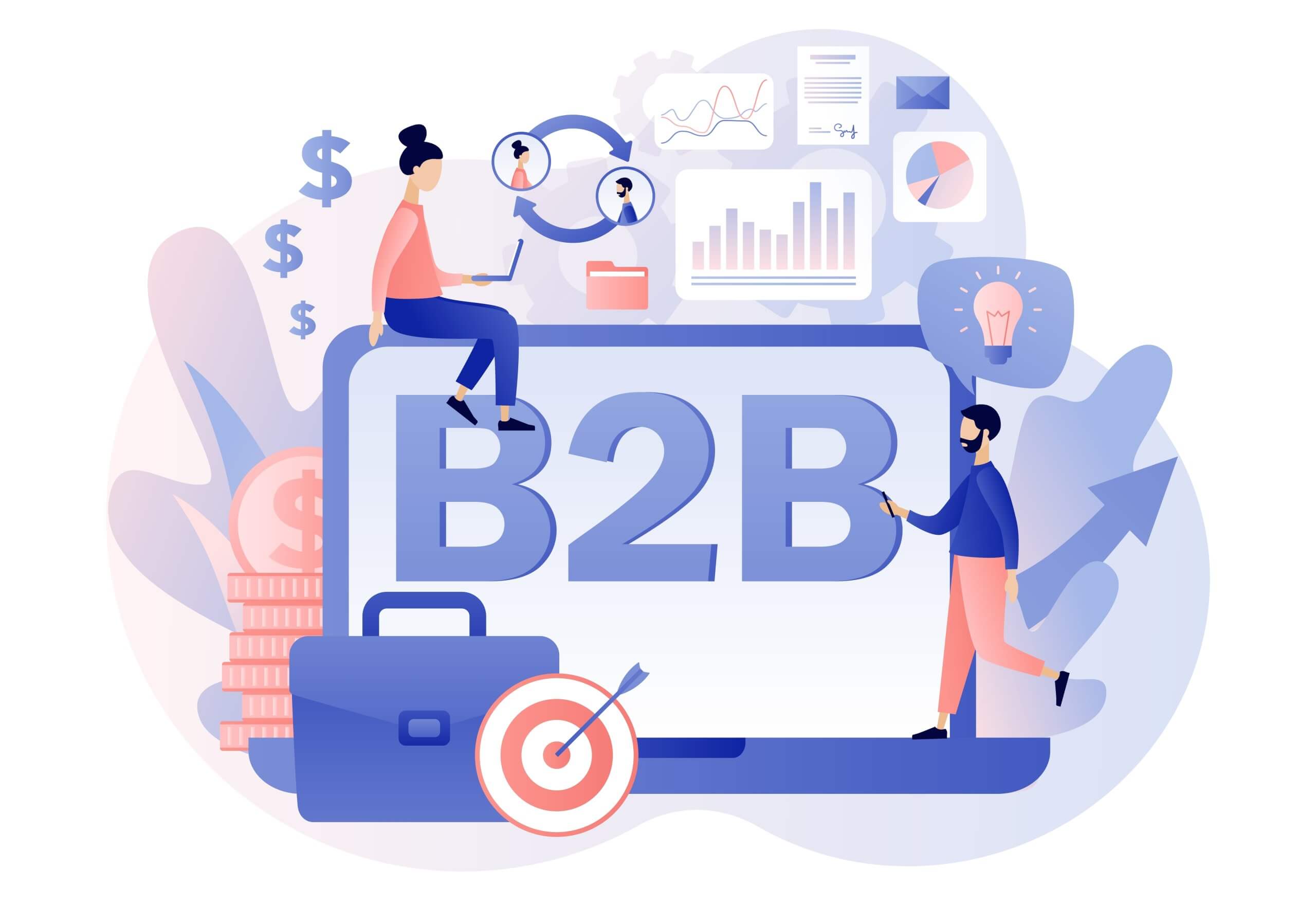
Content marketing can be a highly effective tool for B2B lead generation provided that you know who you want to connect to and how to approach them.
The key to developing a successful marketing strategy is getting to know your audience. Is your customer base mostly made of engineers, technicians, marketing managers, or business leaders?
Answering this question will help you get an idea of their decision-making responsibilities. Think of the goals they might be seeking to achieve – are they looking to build a long-term partnership or maybe to streamline a process?
Once you have a good understanding of who your customers are, it will be easier to approach them with content that is relevant to their needs, whether product comparisons, service/product reviews, case studies, or whitepapers.
Where to Use Content Marketing Strategy?
Along with adjusting your content strategy to fit your particular business, you should also tailor specific content for the different channels and mediums you want to promote your brand in and through.
Content Marketing Strategy for Social Media (Facebook, Instagram, LinkedIn)

Whether your focus is on Facebook, LinkedIn, or Instagram, an effective content marketing strategy comprises several key elements: setting goals, audience segmentation, choosing formats and content types, and creating a publishing calendar for different distribution channels.
Of course, you also want to measure and analyze your strategy’s performance using metrics like audience growth rate, follower count, comments, likes, and social media mentions.
The indicators you choose to focus on, depend on the goals you are looking to accomplish with your content marketing strategy.
Video Content Marketing Strategy
At the beginning of any new marketing campaign, you need to start with your goals. If your main goal is to stand out as a reference, for example, you can share interviews with your company’s top professionals and executives to showcase their knowledge and expertise.
If you are looking to create brand awareness, sharing a product video is an excellent way to highlight the benefits and uses of your offerings. How-to tutorials, in particular, help prospects imagine how they will feel with a product.
A good example of enabling customers to envision how a product will work for them is beauty brands showcasing real customers, influencers, and makeup artists using their products.
How to Build a Content Marketing Strategy?
So by now, you already have a deeper understanding of what, where, and who should be utilizing content marketing. But how do you build your content strategy, exactly?
Here are a few tips.
Set Goals

The very first step to building a successful content marketing strategy is setting specific, reasonable, and measurable goals.
If your goal is to build brand trust, for example, your performance metric might be to gain 100 subscribers for your YouTube channel or newsletter. If your goal is to expand brand awareness, the metric might be increasing the number of Facebook likes to over 1,000 a month.
Define Your Audience
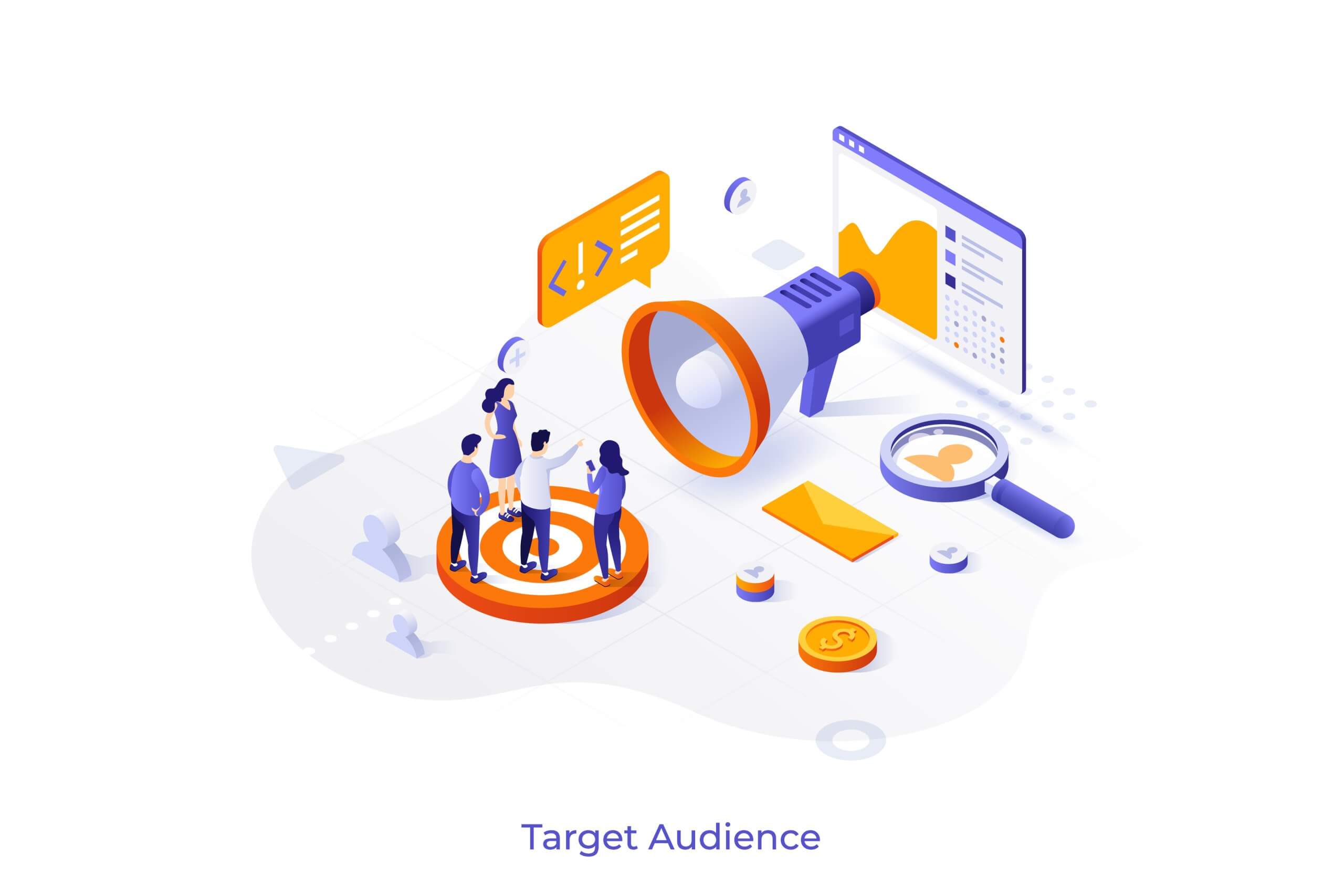
Defining a target audience is another key component that involves segmenting customers into groups they naturally fall into. You can group customers into negative, neutral, and loyal, for example.
Alternatively, you can use psychographic and demographic factors like gender, age, lifestyle choices, goals, and values.
Research Competitors
Researching your competitors is a great way to make your business unique. Understanding the competitive landscape can help identify ways to distinguish yourself from other brands in your industry.
As a rule, marketers are in a better position to compete when they get to know how they fare, what their vulnerabilities are, and why and when people prefer their competitors.
Asking customers about their experiences and attitudes toward competitor brands is one way to get a better idea of how to improve and become part of their lives.
Research Keywords
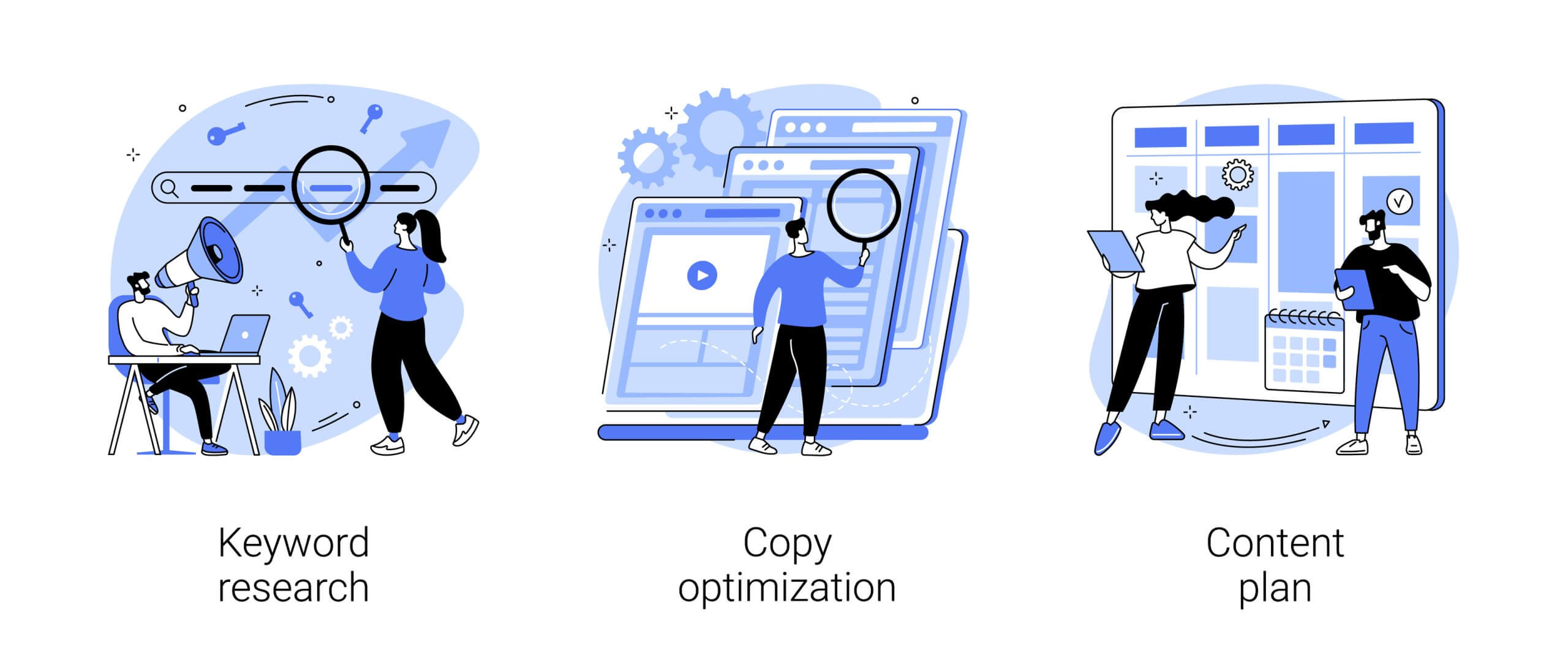
Keyword research is instrumental to building a successful content marketing strategy. Using targeted keywords relevant to your customers’ search intent will get your brand in front of the right eye.
To identify the right search terms for your content, however, you need to think of what you want your brand to be known for. Some areas of expertise are outsourced marketing, digital transformation, enterprise software, and mobile computing. Your area of expertise should be the main topic to create content around.
Once you pinpoint your main theme, you want to break it down into supporting themes. Then try to identify relevant search terms, including semantic versions and variations of your primary keywords. This is a way to bring in additional, yet relevant information, thus adding more depth and detail.
Revise Existing Content

Revising your existing content helps ensure it is still relevant and SEO-optimized. New facts, trends, and statistics emerge all the time. Your content may be outdated if you’ve made updates or changes to your brand’s offerings. Or the keywords that got you traffic may have lost popularity. And some of your backlinks may become bad, outdated, or irrelevant over time.
One example is linked videos or content that are taken away. Another is links pointing to stale content. All this could harm your ranking and traffic which is why it is important to review and update your content.
Consider Using A Content Marketing Strategy Template
A content marketing strategy template can be a useful tool to help you outline your goals, identify topics that align with your audience, and come up with a distribution plan and publishing schedule.
Items to include in your marketing strategy could also be search intent, keyword phrases, content types, distribution channel, and publish date.
Develop A Content Marketing Strategy Action Plan
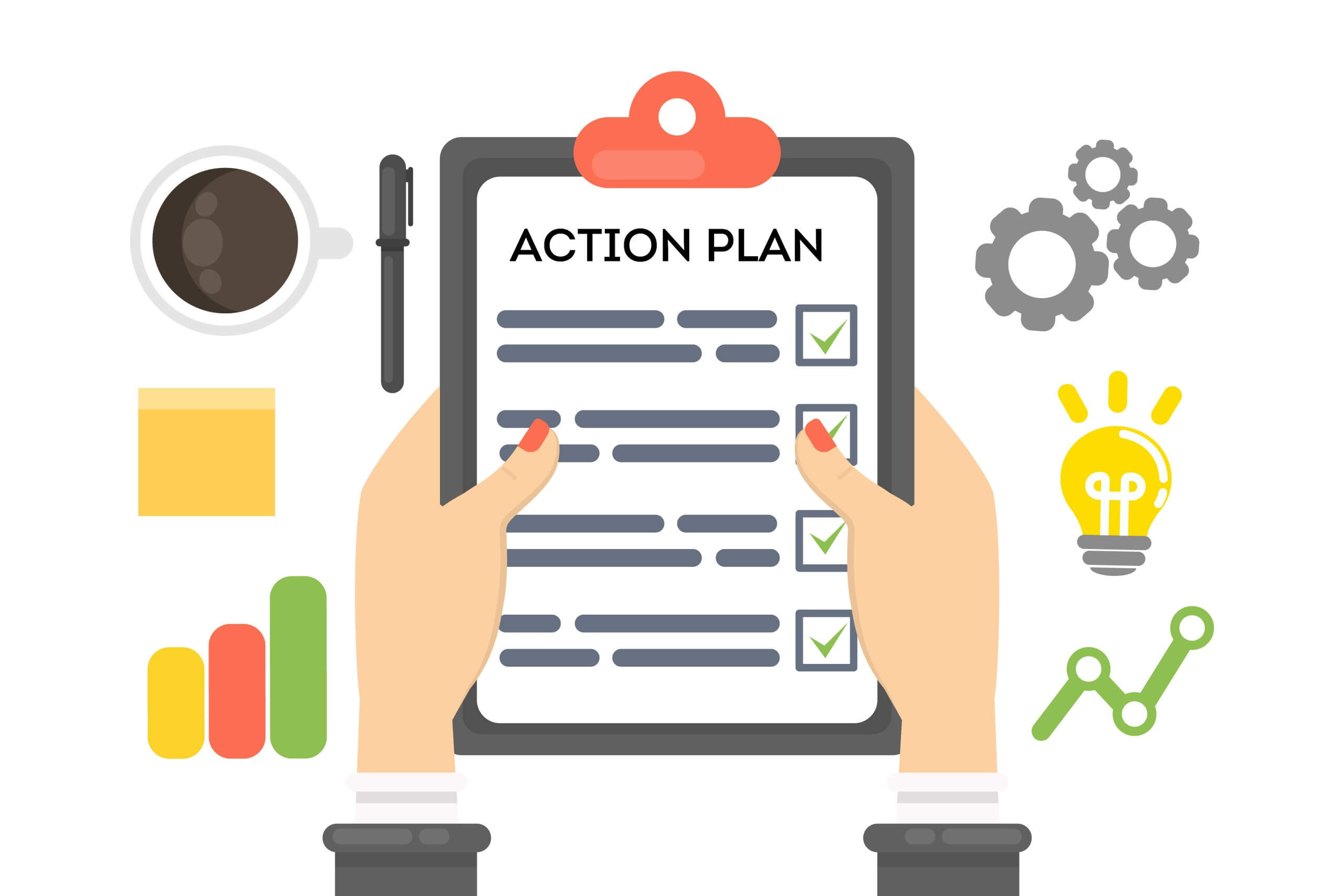
Your content marketing action plan is a roadmap to drive engagement, traffic, and leads and accomplish your business objectives.
It is a game plan that defines your overall objectives, the audience you are trying to engage with, and the types of content that will attract your audience and support your brand.
As part of your action plan, you need to identify ways to distribute, market, and amplify content and indicators that help you measure success.
Content Marketing Strategy Examples
Coke’s “Share a Coke” and Apple’s Watch Help Stories are excellent examples of content marketing done right.
Coke’s campaign involved changing the wrapping to customize the bottle and engage with customers on a more personal level. They comprised a list of 150 popular names in Australia that were printed on the side of the bottle.
Since its first launch in 2011, the campaign was introduced in other countries around the world so that customers can “Share a Coke” with John, Diego, or Michelle.
Apple’s Watch Help Stories also prove the power of content marketing when done right.
The series of videos show how their smartwatch can help people connect to emergency services in a car accident when trapped in a river, and other extremely dangerous situations. Over the series, Apple emphasizes how their smartwatch is something you can’t live without.
https://www.youtube.com/watch?v=QJ2JiwEARFo
Tip: Hundreds of growing businesses use Socialfix to create their content marketing strategy and showcase their products and services. 
How to Define and Measure the ROI of Your Content Marketing Strategy?
Along with structuring the most appropriate content strategy, you need to identify the metrics that will help you measure your return on investment. Here’s where to focus.
Content Marketing Strategy Metrics
The metrics you’d apply differ for the type of content.
For Articles/Blog Posts

There are a variety of metrics to track and measure content performance, including traffic, unique/new/returning visitors, time on site, time on page, bounce and exit rate, and page views.
These are metrics that track user behavior and enable you to identify customer-relevant content that will involve your audience and result in better engagement.
For Email

The most common email marketing metrics that you should be tracking include open, click-through, and conversion rates, number of subscribers and unsubscribes, spam complaints, and engagement over time.
Tracking the percentage of users who open your emails, for example, gives you an idea of how engaged they are.
The Click-through rate is another important metric that shows you the recipients who actually clicked on your links.
Whether you are asking people to donate to a cause, subscribe to your newsletter, or buy something, the click-through rate can help you measure how well you have done in accomplishing your marketing goals.
For Social Media

Social media metrics are indicators that give you an insight into how well your content is performing on networking sites.
Standard metrics to pay attention to are impressions, reach, virality rate, engagement rate, social sentiment, and audience growth rate. The type and number of metrics you track depend on your marketing goals, the size of your team, and your timeframe and budget.
For Videos

With video, you’ll be tracking metrics like clicks, comments, watch time, number of views, and so on. The specific metrics depend on your marketing objectives, where you are in the marketing funnel, and the type of content you’re promoting.
Watch time, for instance, shows you the percentage of visitors who watched your video. A longer watch time is an indication that prospects enjoy your video while a shorter watch time suggests you missed the mark.
For Podcast
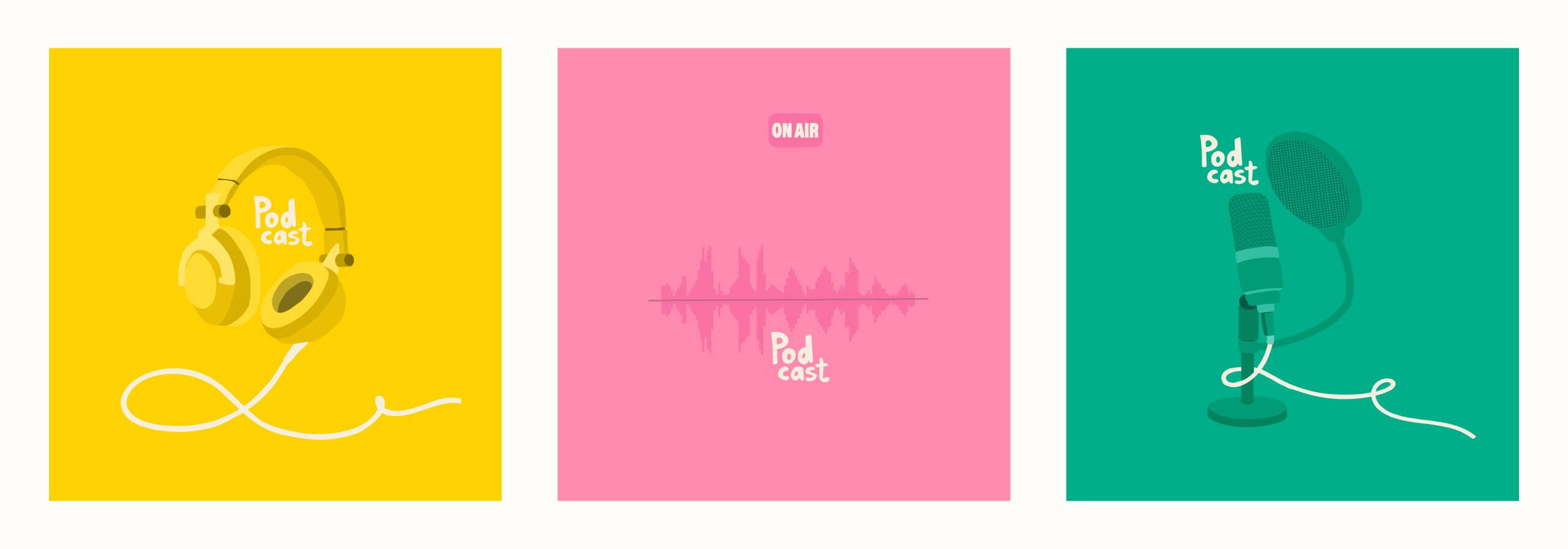
Measuring your podcast’s success can be a challenge simply because users consume it via different platforms and devices.
Luckily, some indicators can give you an insight into your podcast’s performance and what you might need to change. The most common indicators to track our downloads per episode, subscriptions, top episodes, and the number of clicks, shares, and likes your podcast gets on social media.
Content Marketing Strategy Analysis
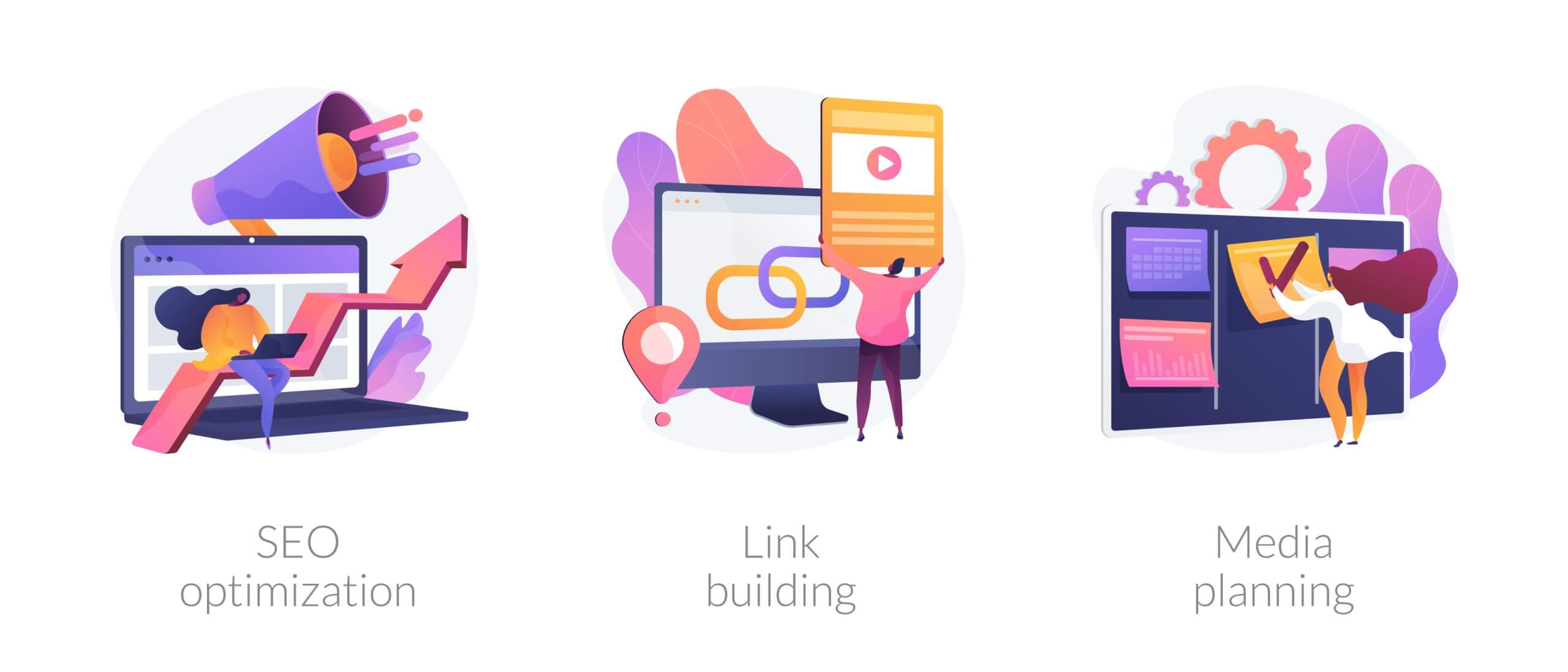
A content marketing strategy analysis is a key tool to measure performance and identify gaps and areas of improvement. Data analysis shows whether your content appeals to users, what types of content and topics are the most popular, and what are the primary channels that bring traffic.
As part of your strategy analysis, you’d want to analyze your traffic channels, including paid, social, referral, email, organic, and direct. This will help you identify where most of your traffic comes from.
As a next step, you need to determine which of your posts get the most engagement. Look at the things they have in common as well as details such as how actionable they are, what imagery they have, what category they fall into, and how long your posts are.
All this will help you to come up with future content to be published on your blog or website. For instance, if your top-performing posts are 800+ how-to guides with 1 – 2 images, this is the type of content you should be aiming for.
Content Marketing Strategy Statistics

According to the State of Content Marketing 2022 Global Report, content is an essential part of a brand’s marketing strategy.
More than half of businesses (57%) report that they have a documented strategy in place while 19% have developed an advanced strategy. Of all businesses with a documented marketing strategy, 78% report their content marketing efforts as successful.
The majority of companies allocating between 10 and 70% of their budget to content promotion consider their marketing campaigns to be successful.
The report concludes that the key factors to success are using diversified channels, allocating more financial resources, and developing a documented content marketing strategy to improve online results.
Content Marketing Strategy KPIs:
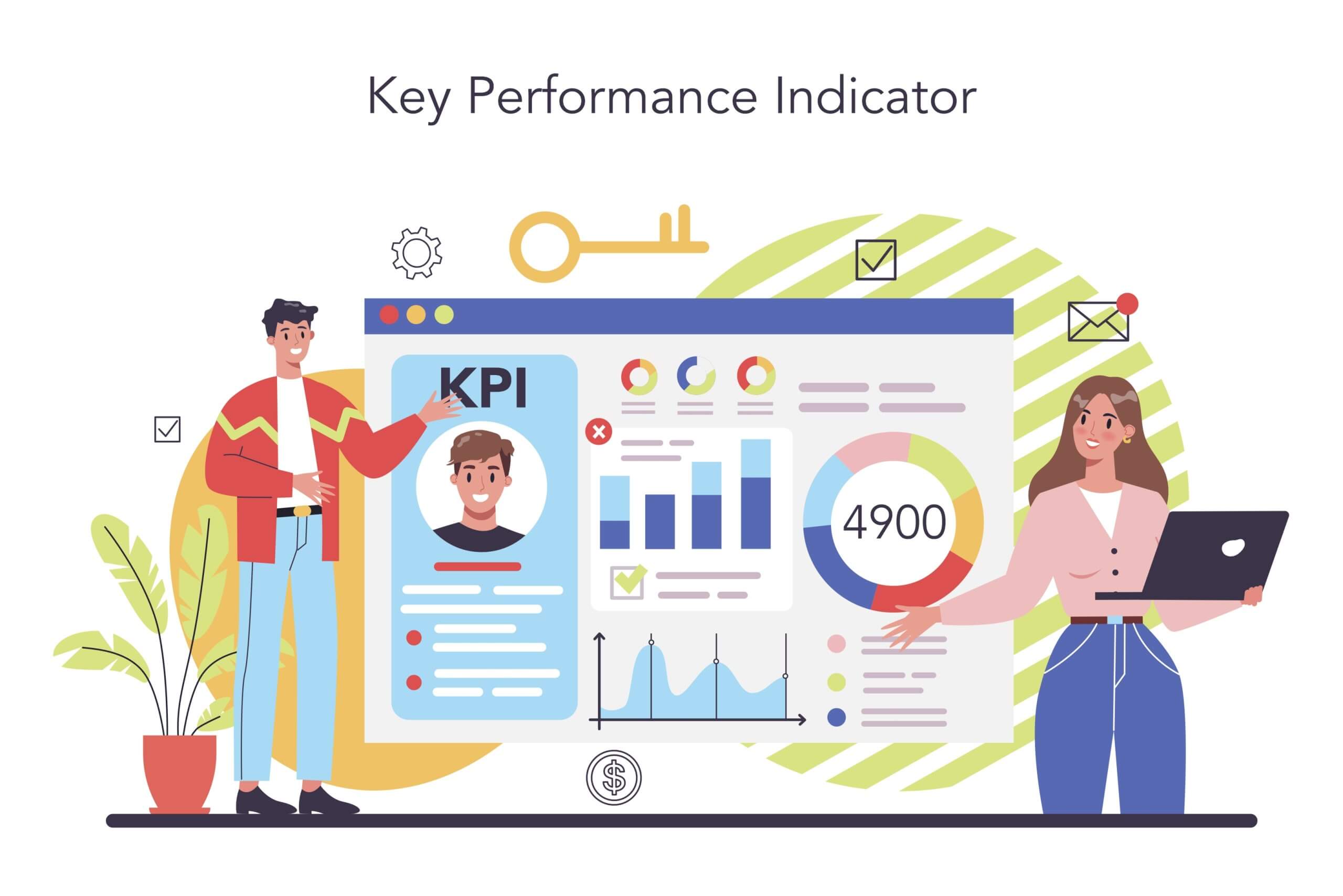
The key performance indicators will give you a better understanding of how well your content strategy is performing. Here are a few to monitor closely.
Leads
In marketing, a lead is a business or individual that is interested in the products you are selling. A lead is someone that marketers see as a potential customer but is not ready to buy yet.
That’s why businesses focus their efforts on attracting sales qualified leads that are ready to receive a sales call from their marketing team.
Conversion Rate

Conversion rate measures the percentage of visitors to your website who completed an action. It shows how successful you are in converting traffic into sales on a social media platform, app, or website.
Sales
Sales are often used as a metric that tracks performance in a new market. Associated indicators include revenue per rep, sales by contact method, sales by region, and quote-to-close ratio.
Cost Of Producing Content
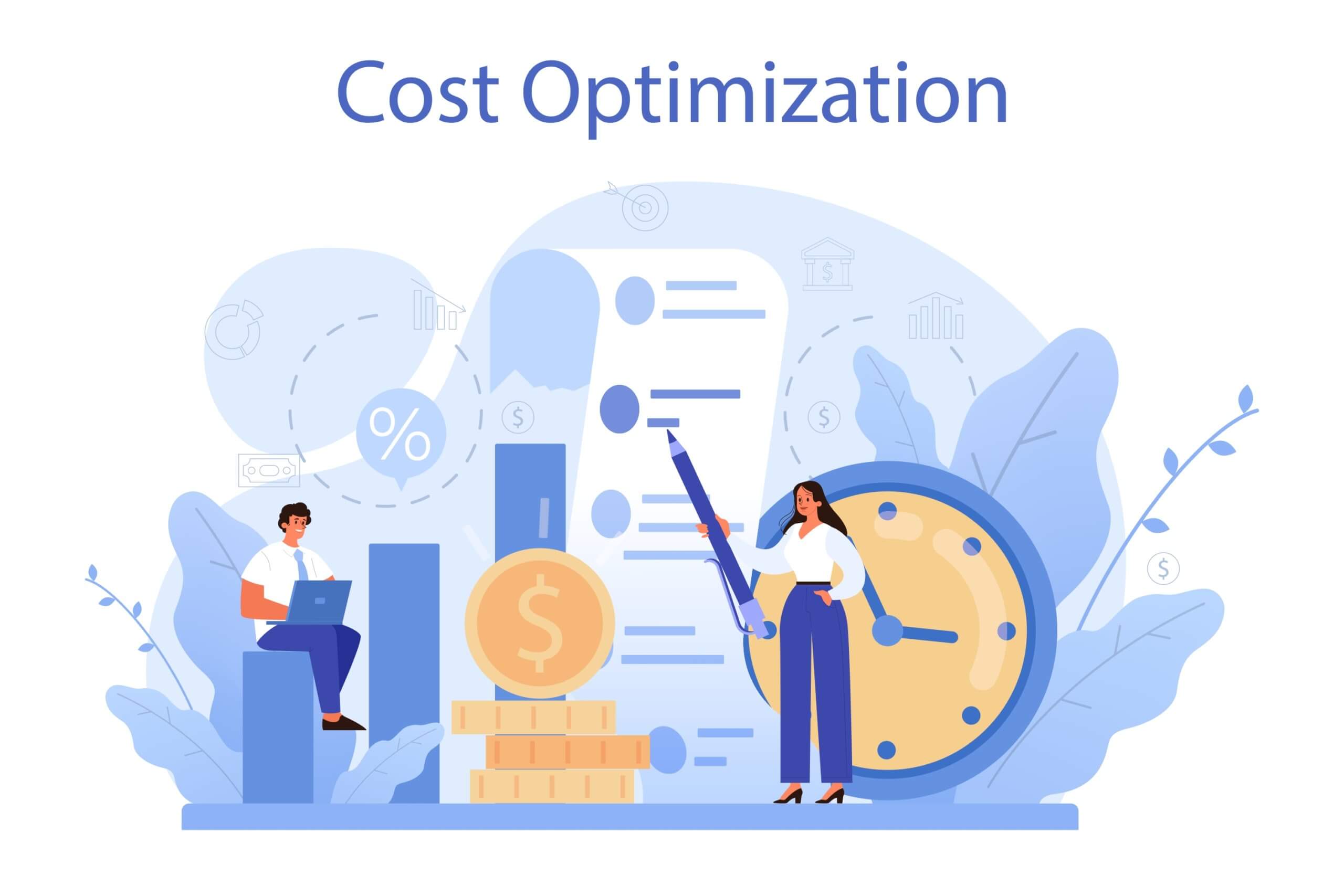
The cost of producing content depends on factors like delivery schedules, frequency, outsourcing service fees, complexity, and the scope of your project.
Ultimately, whether you have an in-house team or are outsourcing your content, you want to compare cost per piece to effectiveness. This will depend on your project and distribution channel.
For instance, if you are posting on social media, you should be doing it more frequently. Using third-party repurposed content would make sense in this case.
Sharing
When people share your content, they are actually promoting it. This is also an indication that your content is engaging, helpful, and relevant to their followers.
In general, metrics such as comments, shares, and likes give you an idea of whether users are engaging with your message and your brand and the extent to which this has an impact on your business objectives.
Important Things to Consider for Content Marketing ROI
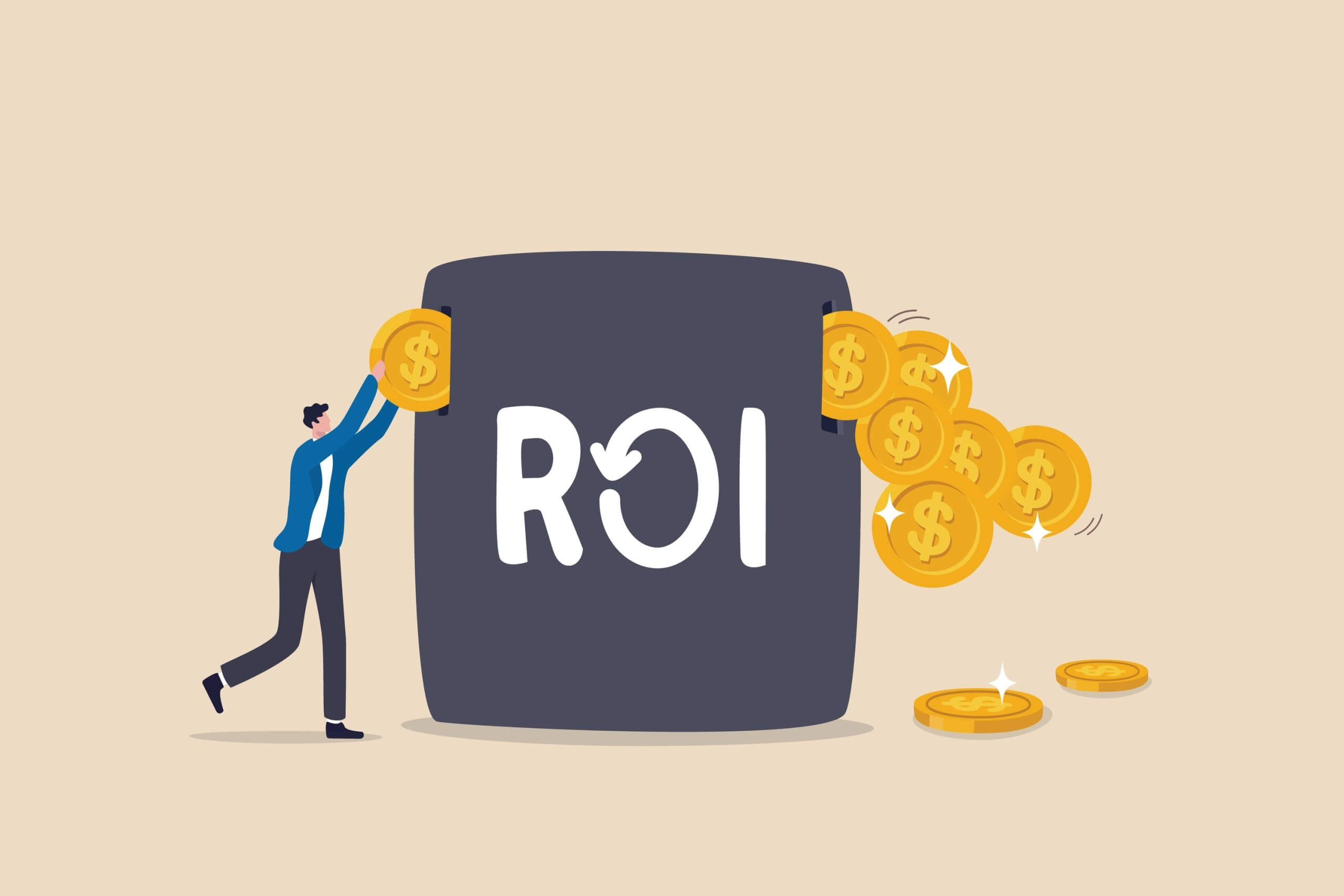
Content marketing is a long-term strategy so you should be prepared to reach your goals within a reasonable long time.
It’s Time Consuming
Indeed, content marketing can be a challenging and time-consuming endeavor. The process of coming up with topics and creating, publishing, and promoting content can take a lot of time.
Also, some pieces of content such as videos and infographics not only take more time to create but require specific skills and resources.
Don’t Expect Immediate Results

Content marketing can be a game-changer but the benefits are rarely immediate. It normally takes time to find out what works and what doesn’t.
Unlike paid advertising, it is a long-term strategy that requires planning, commitment, and consistency to create brand awareness and build trust and credibility.
How to Manage a Content Marketing Strategy?

Content marketing is more than just running a blog or sharing random pieces of content on social media.
To create a lasting impact, you need to manage the process of creating, distributing, and promoting content. All too often a marketing campaign fails not because of a lack of engaging and relevant content but because of poor execution.
This means you need someone within your organization who is responsible for overseeing the whole process. Your project manager will be tasked with things like audience development, contracting freelancers, project budgeting, photography and design, and editorial.
If your main focus is on social media, you’ll need to have a chief listening officer who will be following conversations across all major social media channels. These conversations will then be routed to the respective departments for handling, like marketing, sales, or customer service.
How to Promote a Content Marketing Strategy?

There are several ways to ensure that your content gets noticed and your promotion efforts are bringing you closer to accomplishing your marketing goals. You can collaborate with influencers, guest post for others, or reach out on social media.
Other ways to promote your content are display ads and sponsored social media posts, engaging with your local community, and email marketing.
Wrapping Up

Content marketing has emerged as one of the most effective tools for brand communications and customer engagement.
What makes it so effective is the sheer variety of content that can be created to reach diverse audiences with different mindsets, learning styles, information needs, and expectations.
From opinion posts, quizzes, and educational games to podcasts, videos, and social media posts, there are plenty of content formats to appeal to different audience personas.
In addition to a wide variety of content styles to appeal to specific segments, content marketing allows you to experiment with a range of publishing mediums and platforms. Using an omnichannel approach can be an effective tool for deriving a maximum impact by engaging with users wherever they may be shopping.
Reaching customers authentically and on their own terms takes on new importance. As a brand, you need to be more emotionally inclusive to convey a message that resonates with customers and makes them feel that your offerings are relevant.
You need to be both relevant and supportive to meet people where they are on their journey through uncertainty, pain, loneliness, or happiness. Being supportive is also about investing in relationships and building a community.



















